Italian garden design represents the perfect marriage of classical elegance and Mediterranean charm, transforming outdoor spaces into timeless havens of beauty and tranquility. These gardens are rooted in Renaissance traditions, featuring rigorous symmetry achieved through tightly clipped evergreens and architectural elements inherited from Roman garden design. Whether you have a sprawling estate or a modest backyard, Italian garden principles can create sophisticated outdoor living spaces that evoke the sun-drenched landscapes of Tuscany and the Italian Riviera. From cypress-lined pathways to bubbling fountains, each element works harmoniously to create spaces where nature meets artistry in perfect balance.
1. Italian Cypress Tree Allées for Dramatic Vertical Impact
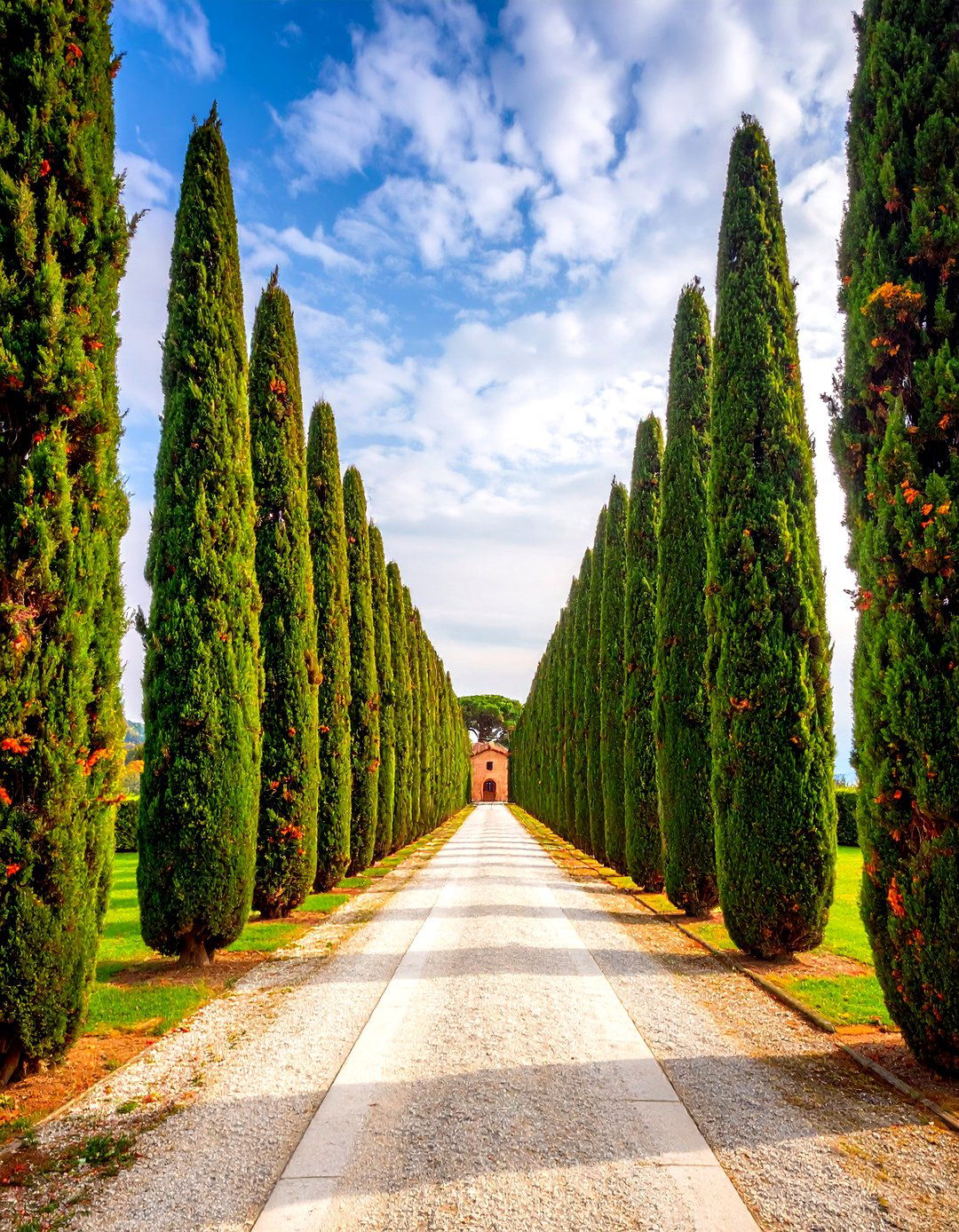
Italian cypress trees create stunning vertical columns that can reach heights of 50-80 feet while maintaining a narrow spread of only 4-5 feet. These majestic evergreens serve as living architecture, perfect for creating formal allées that guide visitors through garden spaces. Plant cypress trees approximately 3 feet apart for efficient screening or 5-6 feet apart to showcase each individual specimen. Their drought-tolerant nature and ability to grow 2-3 feet per year makes them ideal for establishing immediate impact in landscape designs. Use Italian cypress trees to frame entrances, line driveways, or create symmetrical borders that define different garden rooms while adding Mediterranean authenticity to any outdoor space.
2. Italian Garden Terracotta Container Displays
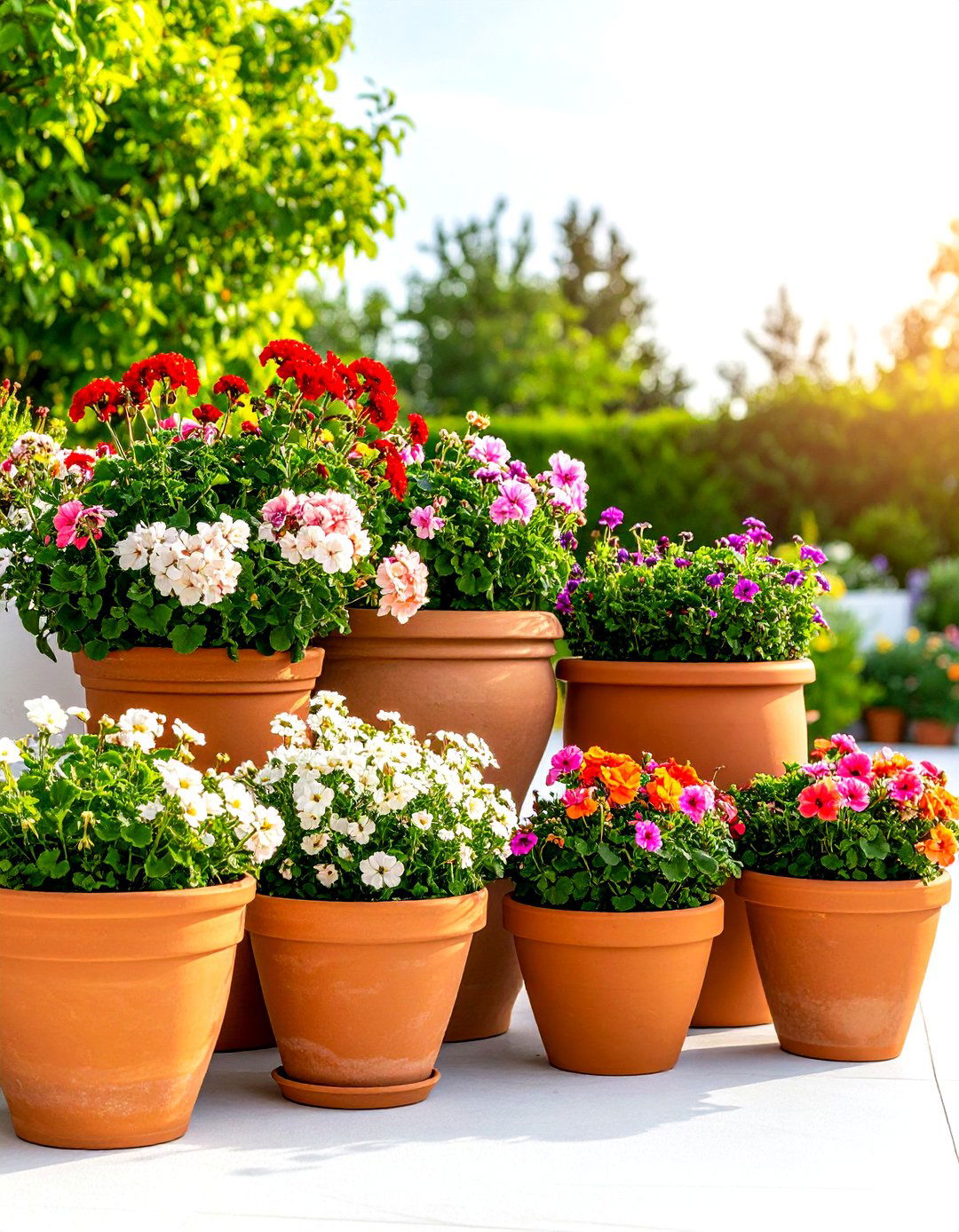
Authentic Italian terracotta pots, crafted from finest Tuscan clay, bring classic Mediterranean style and exceptional durability to garden designs. These handcrafted vessels offer superior drainage properties essential for Mediterranean plants while developing beautiful patina over time. Arrange terracotta containers in large groups or up flights of steps, mixing sizes to create dynamic visual interest. Terracotta's porous nature allows excess moisture to evaporate, preventing root rot in herbs like rosemary and lavender. Fill these containers with cascading geraniums, aromatic herbs, or small citrus trees to create authentic Italian garden vignettes. The warm, earthy tones of terracotta complement Mediterranean plantings while adding rustic elegance to patios and terraces.
3. Italian Garden Fountain Water Features
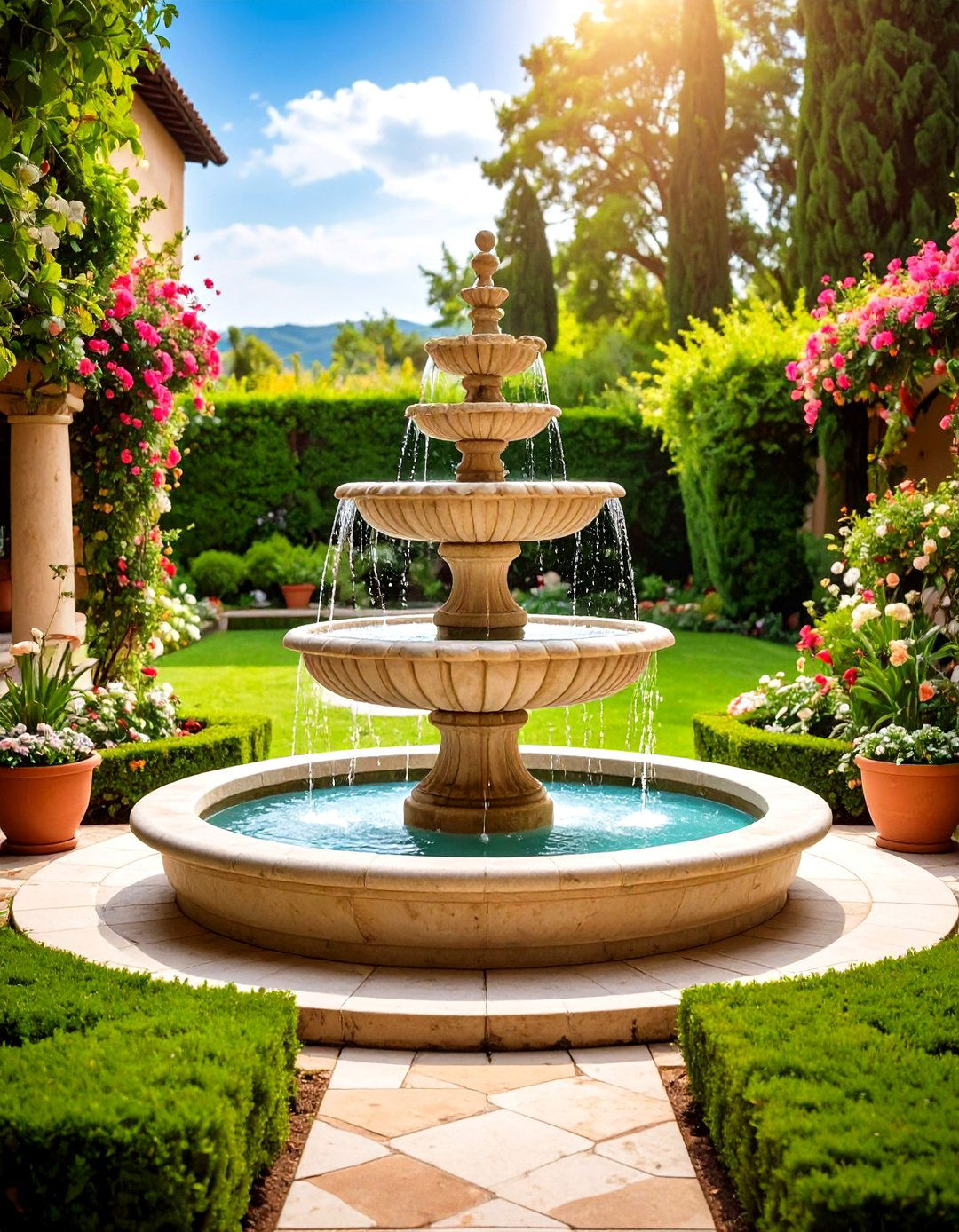
Water features are essential elements in Italian gardens, ranging from simple stone fountains to elaborate multi-tiered installations with hundreds of water jets. Traditional Italian fountains often feature Portland stone and white marble construction with central rosettes carved in Carrara marble. These ornate stone fountains shooting arcs of water typically form the focal point of garden spaces. Consider installing wall-mounted fountains for smaller spaces or classic three-tiered designs for larger gardens. The gentle sound of trickling water creates a soothing ambiance while the visual movement adds life to formal garden settings. Italian fountains utilize sophisticated engineering with natural stone elements to create both beauty and functionality.
4. Italian Garden Mediterranean Herb Plantings

Mediterranean herbs like rosemary, lavender, oregano, thyme, and sage are fundamental to authentic Italian garden design. These aromatic plants thrive in sunny locations with well-draining soil, making them perfect for terracotta containers or raised beds. Rosemary contains potent antioxidants and antimicrobial properties, while sage offers both culinary and ornamental value. Plant herbs near outdoor dining areas for convenient culinary access and to enjoy their natural fragrances. Create custom herb blends like herbes de Provence or za'atar using homegrown ingredients. The silvery foliage of many Mediterranean herbs provides beautiful contrast against darker evergreen backdrops while requiring minimal maintenance once established in appropriate conditions.
5. Italian Garden Olive Tree Focal Points
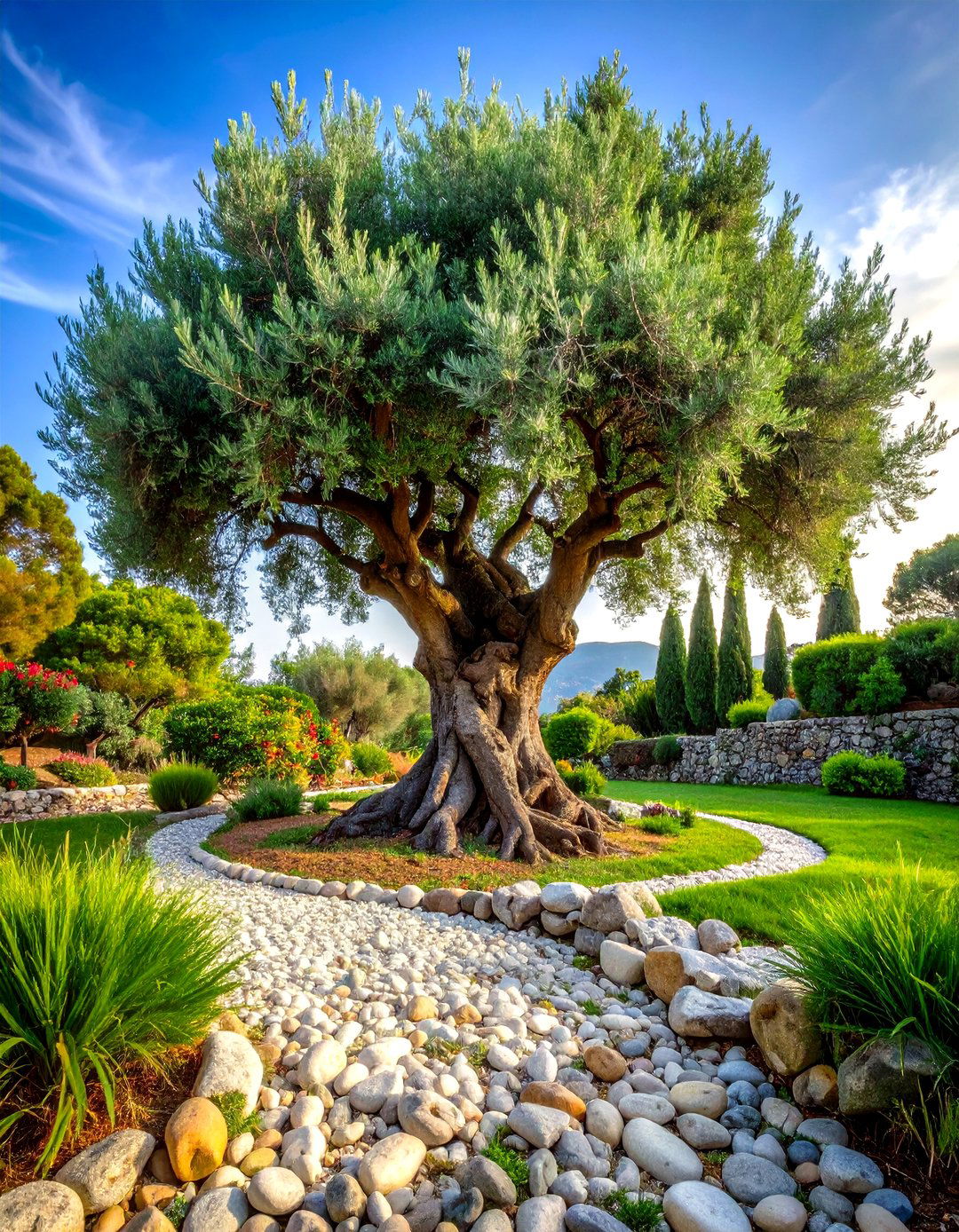
Olive trees serve as magnificent focal points in Italian gardens, offering year-round structure with their distinctive silvery foliage and gnarled trunks. These Mediterranean icons work beautifully in terracotta containers or planted directly in well-draining soil. Olive trees require minimum 6-8 hours of daily sunlight and excel in raised borders surrounded by river cobbles. Pair olive trees with vibrant geraniums in terracotta pots and aromatic lavender plantings for authentic Mediterranean atmosphere. Their drought tolerance makes them ideal for low-maintenance landscapes while their sculptural qualities provide four-season interest. Underplant olive trees with thyme, agapanthus, or Mexican fleabane to create layered garden compositions.
6. Italian Garden Citrus Tree Collections
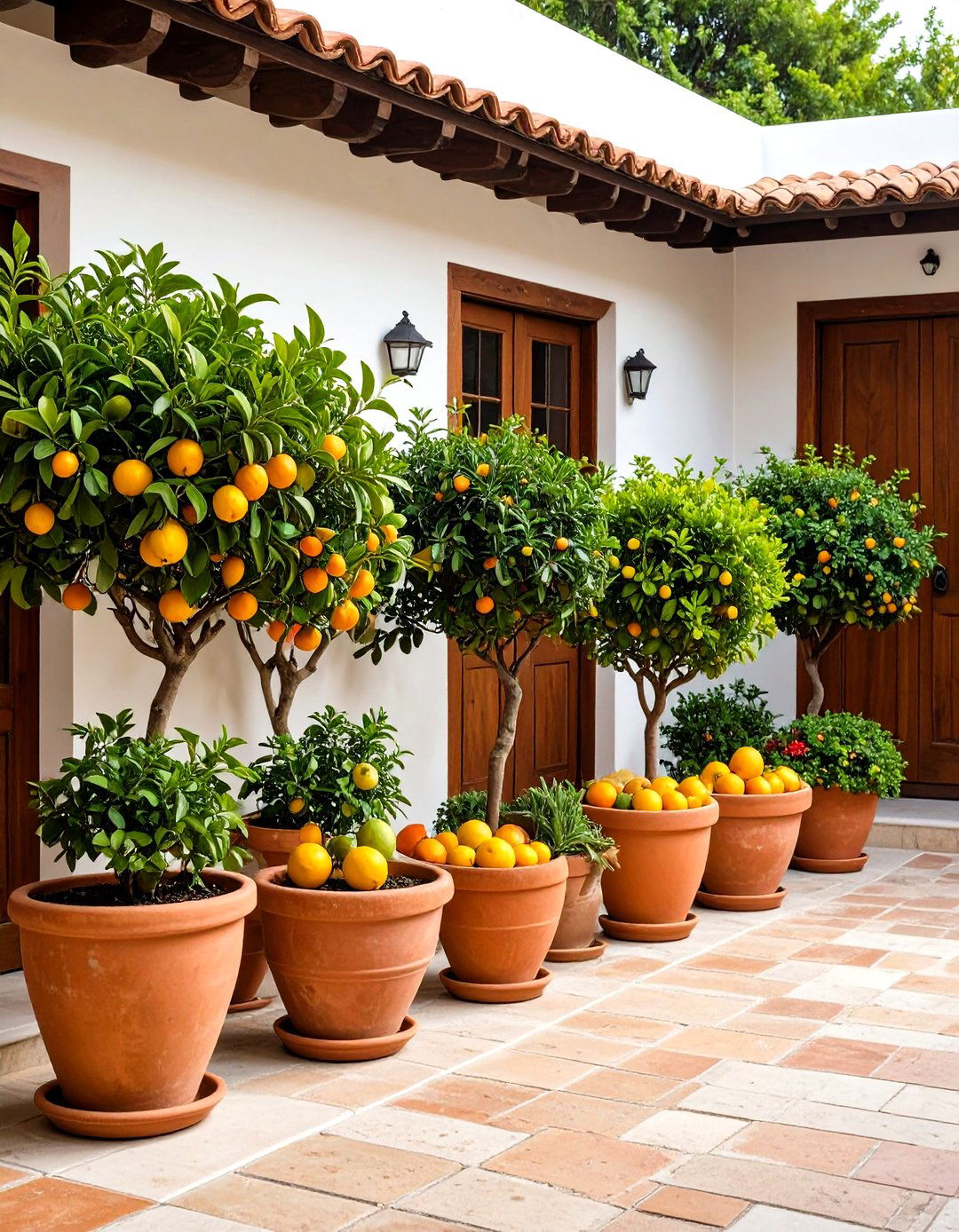
Citrus trees including lemons, limes, and oranges add vibrant color and Mediterranean authenticity to Italian garden designs. These ornamental fruit trees work exceptionally well in large terracotta containers that can be moved indoors during cold weather. Citrus trees smell wonderful and create focal points when grouped with other Mediterranean plants. Position lemon trees near outdoor dining areas where their fragrant blossoms and colorful fruit can be fully appreciated. Decorative planters enhance citrus displays, especially when combined with string lights for evening ambiance. The glossy evergreen foliage provides year-round structure while seasonal blooms and fruit add changing interest throughout the year. Regular pruning maintains compact shapes suitable for container cultivation.
7. Italian Garden Pergola Structures

Pergolas are essential architectural elements in Italian gardens, creating majestic covered walkways that provide shelter and shade while supporting climbing plants. These open-frame structures define outdoor rooms and create intimate spaces for relaxation surrounded by fragrant flowering vines. Traditional pergolas support climbing plants like evergreen ivy paired with lavender, while seasonal vines create evocative seasonal atmosphere changes. At Italian coastal villas, pergolas are often completely covered with purple wisteria or ancient wisteria plants that transform spaces in spring. Construct pergolas from natural materials like wood or stone to maintain authentic Mediterranean character. The filtered light beneath pergolas creates perfect growing conditions for shade-loving plants while providing comfortable outdoor living spaces.
8. Italian Garden Boxwood Hedge Parterres
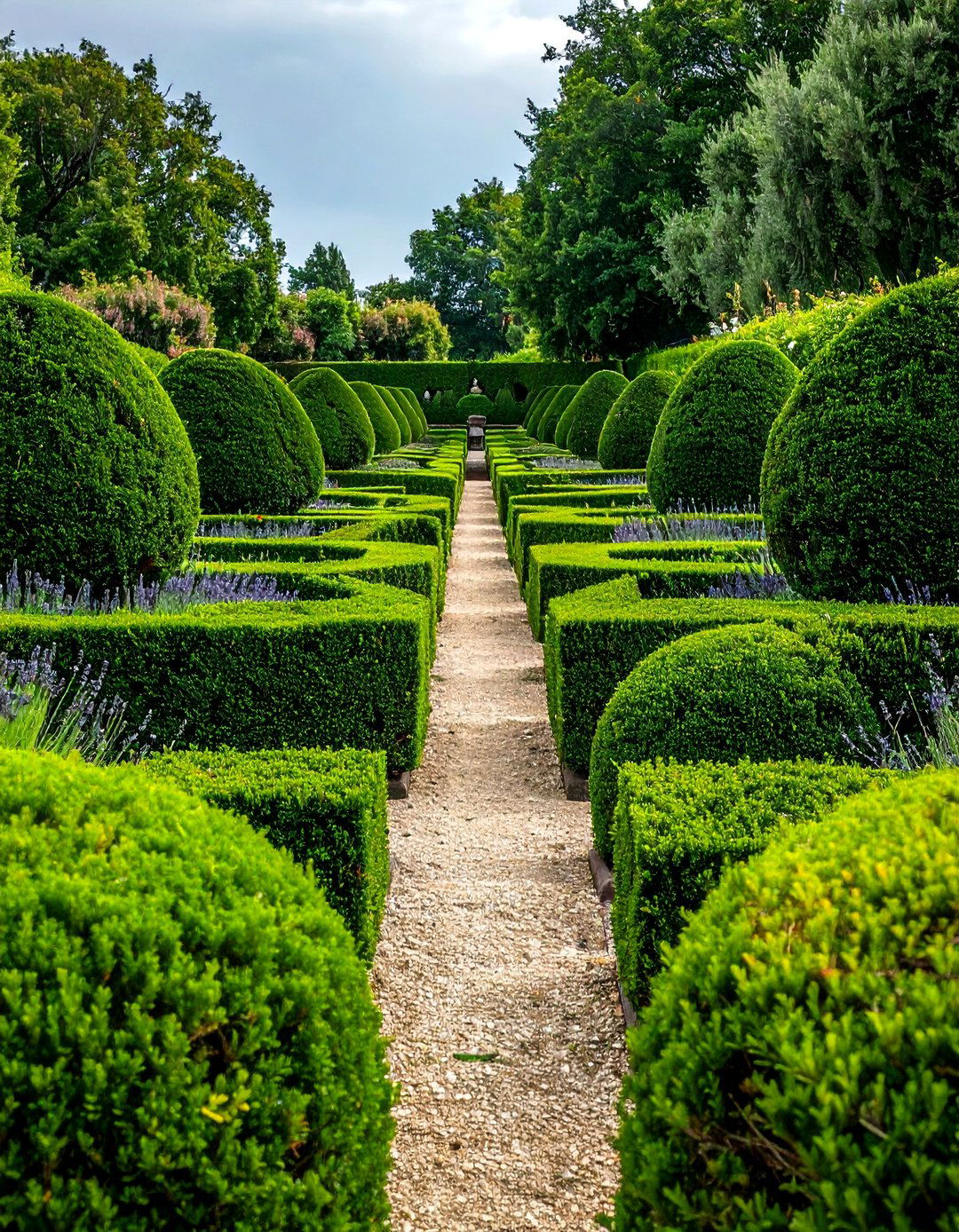
Boxwood hedges are fundamental to Italian garden design, traditionally manicured into geometric shapes and topiaries that create formal garden structure. Contemporary Italian-style parterres feature boxwood-edged beds filled with aromatic plants like lavender, creating simple geometric patterns reminiscent of Renaissance designs. These evergreen hedges provide year-round structure and can be maintained at various heights to define planting areas. Common boxwood grows slowly but creates compact habits with small, glossy oval leaves perfect for formal shaping. Regular pruning maintains crisp edges and geometric forms essential to Italian garden aesthetics. Boxwood parterres work effectively in both large estate gardens and smaller residential spaces where formal structure is desired.
9. Italian Garden Symmetrical Design Layouts

Symmetry is paramount in Italian garden design, with geometric beds and garden rooms creating mirror-image compositions that demonstrate order and balance. Create symmetrical plantings on either side of central walkways or fountains, flanking entrances with matching specimens in urns or containers. Traditional Italian parterres are shaped geometrically in squares, rectangles, or triangles, often arranged on terraced levels for hillside properties. Strong central axes order each garden section, with careful consideration of viewing angles and visual foreshortening for different perspectives. This controlled approach to garden design illustrates humanity's ability to shape nature into artistic compositions while maintaining classical proportions and mathematical relationships.
10. Italian Garden Gravel Pathway Systems
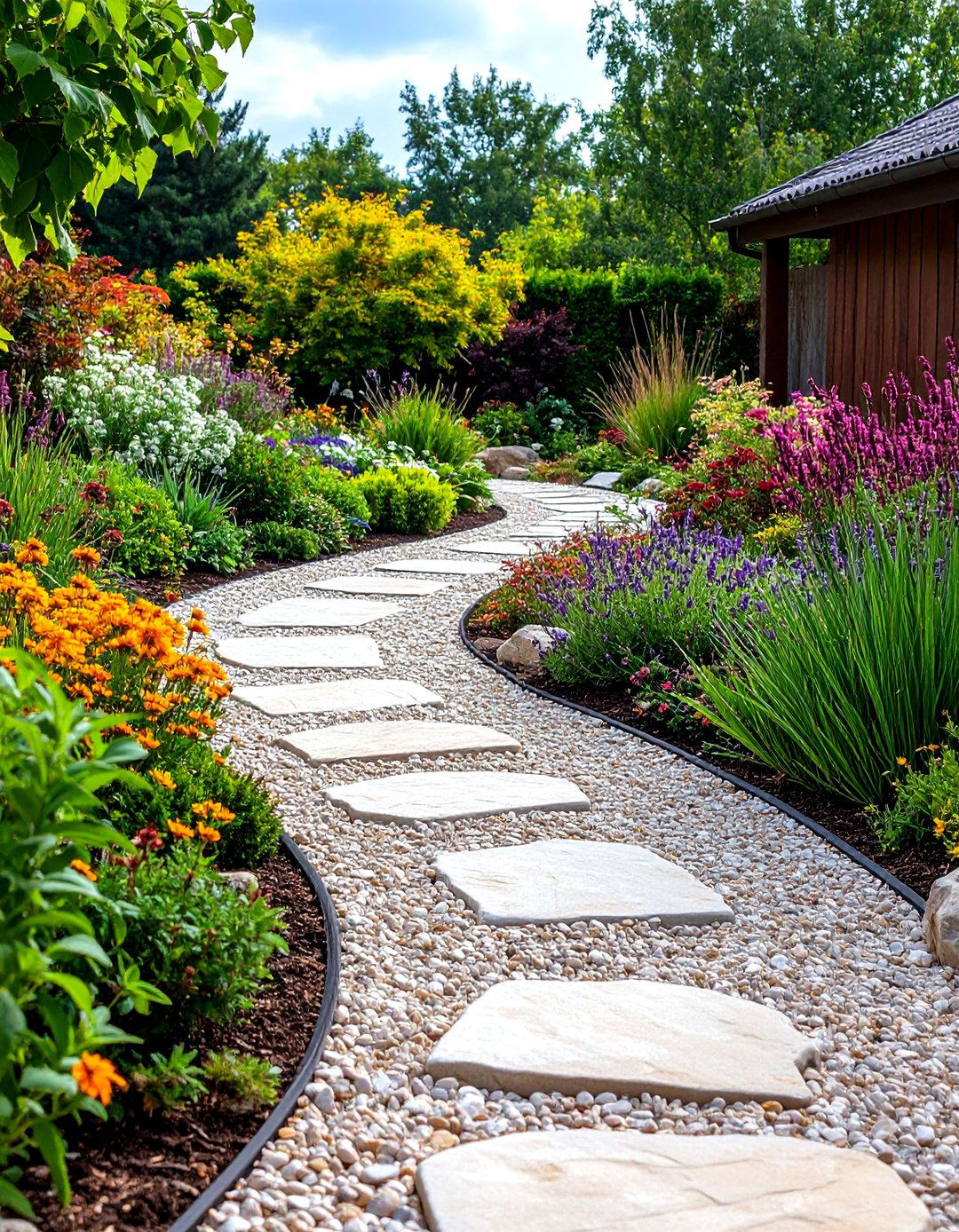
Gravel pathways are characteristic features of Mediterranean gardens, replacing water-thirsty lawns while providing practical walkways between garden areas. These permeable surfaces offer excellent drainage and create satisfying textural contrast against lush plantings. Traditional Italian gardens feature carefully planned promenade-style walkways that guide visitors through different garden rooms. Choose light-colored gravels that reflect heat and complement warm terracotta and natural stone elements. Bordered gravel paths work beautifully when edged with low hedging or aromatic herbs that release fragrance when brushed against. The crunching sound of footsteps on gravel adds auditory dimension to garden experiences while requiring minimal maintenance compared to traditional lawn areas.
11. Italian Garden Natural Stone Wall Elements
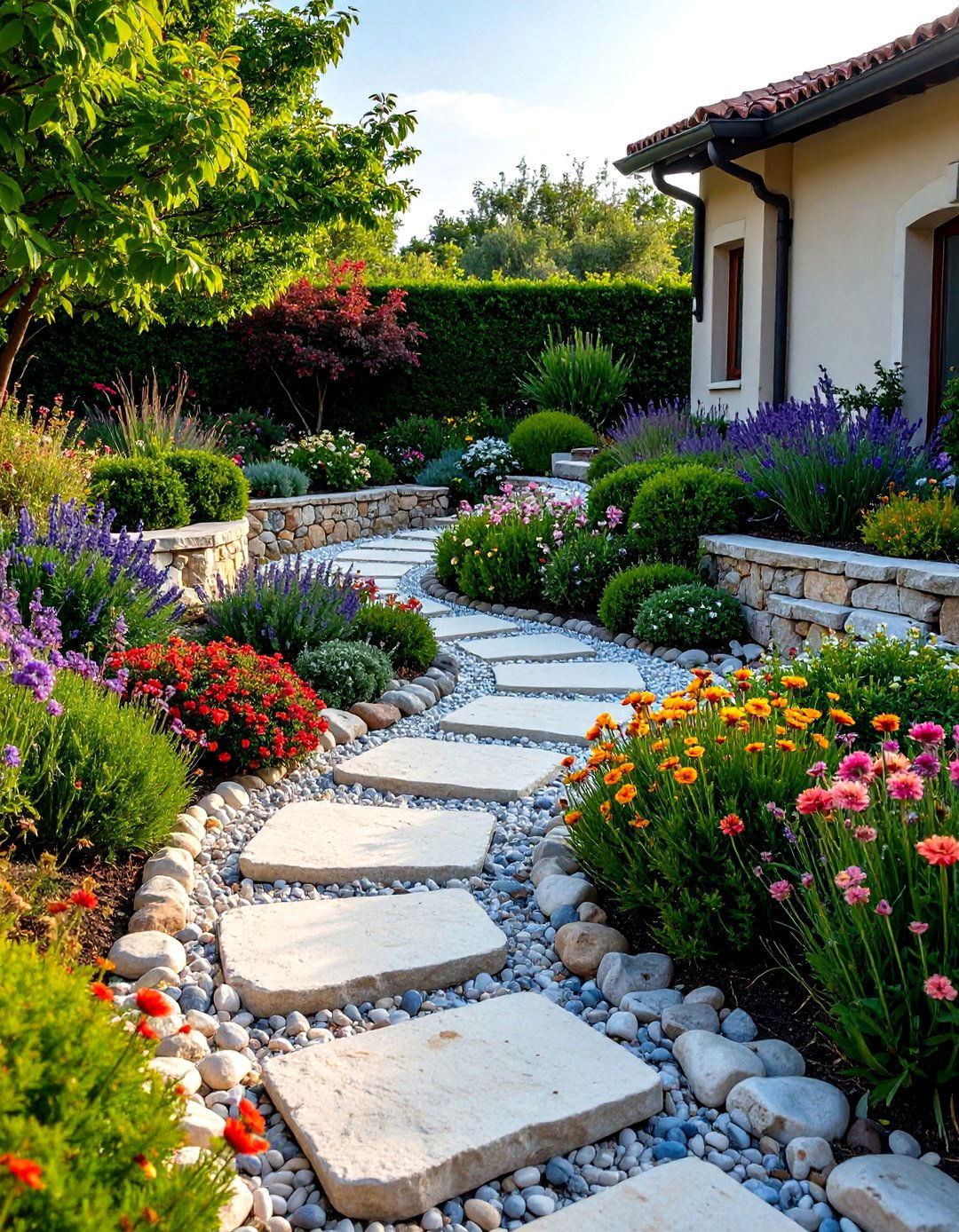
Italian gardens extensively use masonry walls with decorative elements like pebbles or tiles set into surfaces for visual interest. Natural stonework provides essential structure while creating microclimates for different plantings. Traditional walls may feature carved decorative elements, urns, and architectural details that add classical character. Incorporate natural materials like stone in pathways, walls, and garden structures to enhance authentic Mediterranean aesthetics. Stone retaining walls enable terraced planting on sloped sites while providing excellent drainage for Mediterranean plants. Walls were sometimes opened by niches containing sculpture, and gates were used to separate garden parts while serving as dramatic entrances. These permanent structures age beautifully, developing patina and supporting climbing plants over time.
12. Italian Garden Classical Statuary Collections
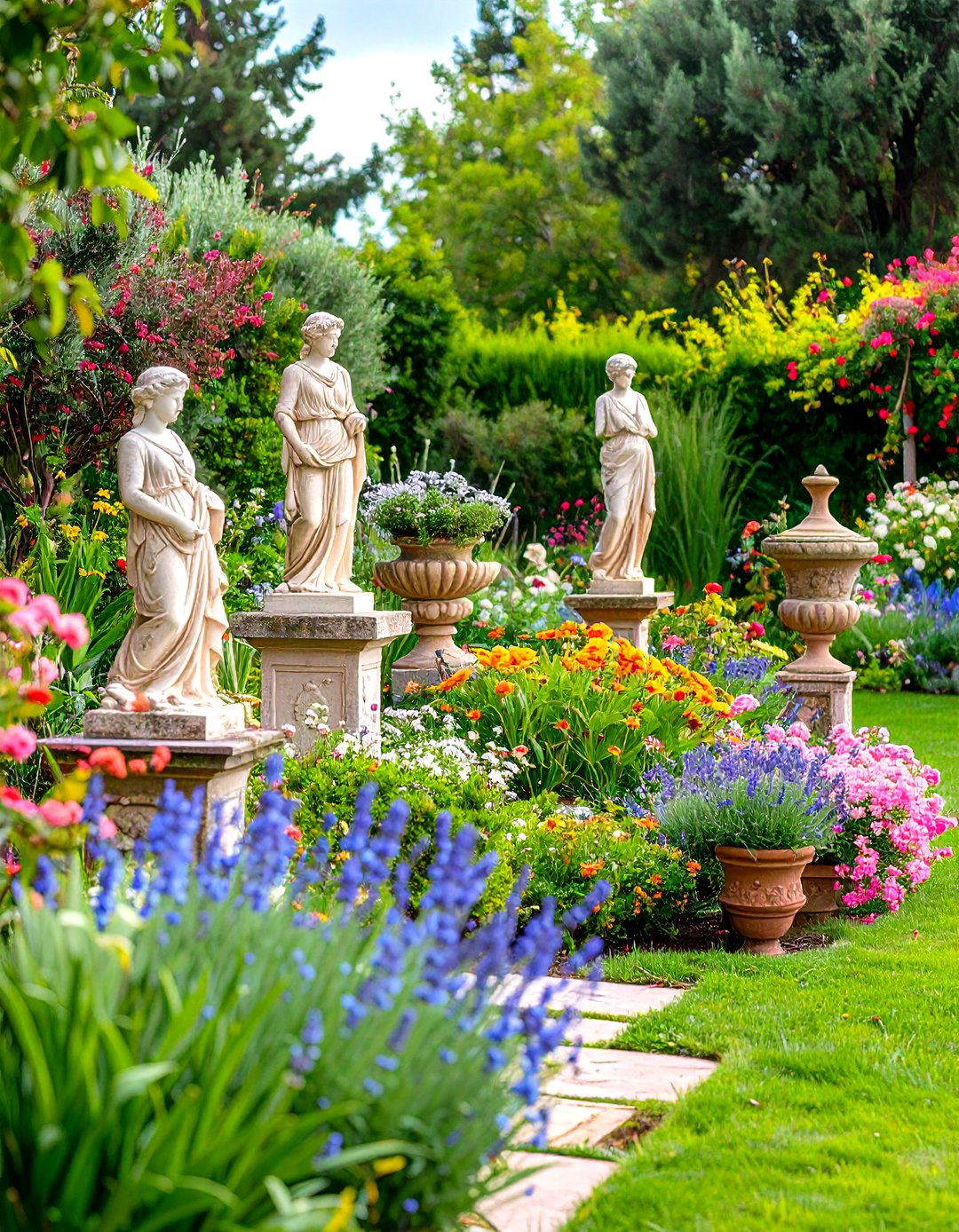
Italian gardens treat outdoor spaces as extensions of interior living areas, decorated with sculptures, mirrors, and ornamental elements that create deliberate, opulent atmospheres. Classical statuary adds dramatic focal points while referencing Italian artistic heritage and Renaissance traditions. Traditional elements include carved urns with distinctive designs like swan's breast, woman's head, ram's head, dolphin, and oval motifs. Position statues at pathway intersections, garden room centers, or as terminal features for long vistas. Grottos often contained elaborate sculpture with sea creatures as especially popular subjects. Choose weathered stone or aged bronze finishes that complement natural garden elements. These artistic installations create contemplative moments while adding vertical interest and cultural sophistication to outdoor spaces.
13. Italian Garden Climbing Vine Installations

Italian gardens extensively feature fragrant climbing vines including jasmine, wisteria, and roses that smother pergolas and architectural structures. The 'Eden' rose or 'Pierre de Ronsard' produces enormous pink flowers from early summer through autumn with glossy deep green foliage. Summer jasmine provides abundant clusters of delightfully scented white flowers, while star jasmine offers glossy dark green leaves that turn deep red in winter. Train climbing vines on pergolas, walls, and trellises to create living architecture that changes with seasons. Clematis armandii serves as an evergreen climber with strongly scented white flowers atop dark green foliage. These vertical plantings maximize growing space while providing privacy, fragrance, and seasonal color changes that define Italian garden character.
14. Italian Garden Mosaic Decorative Elements
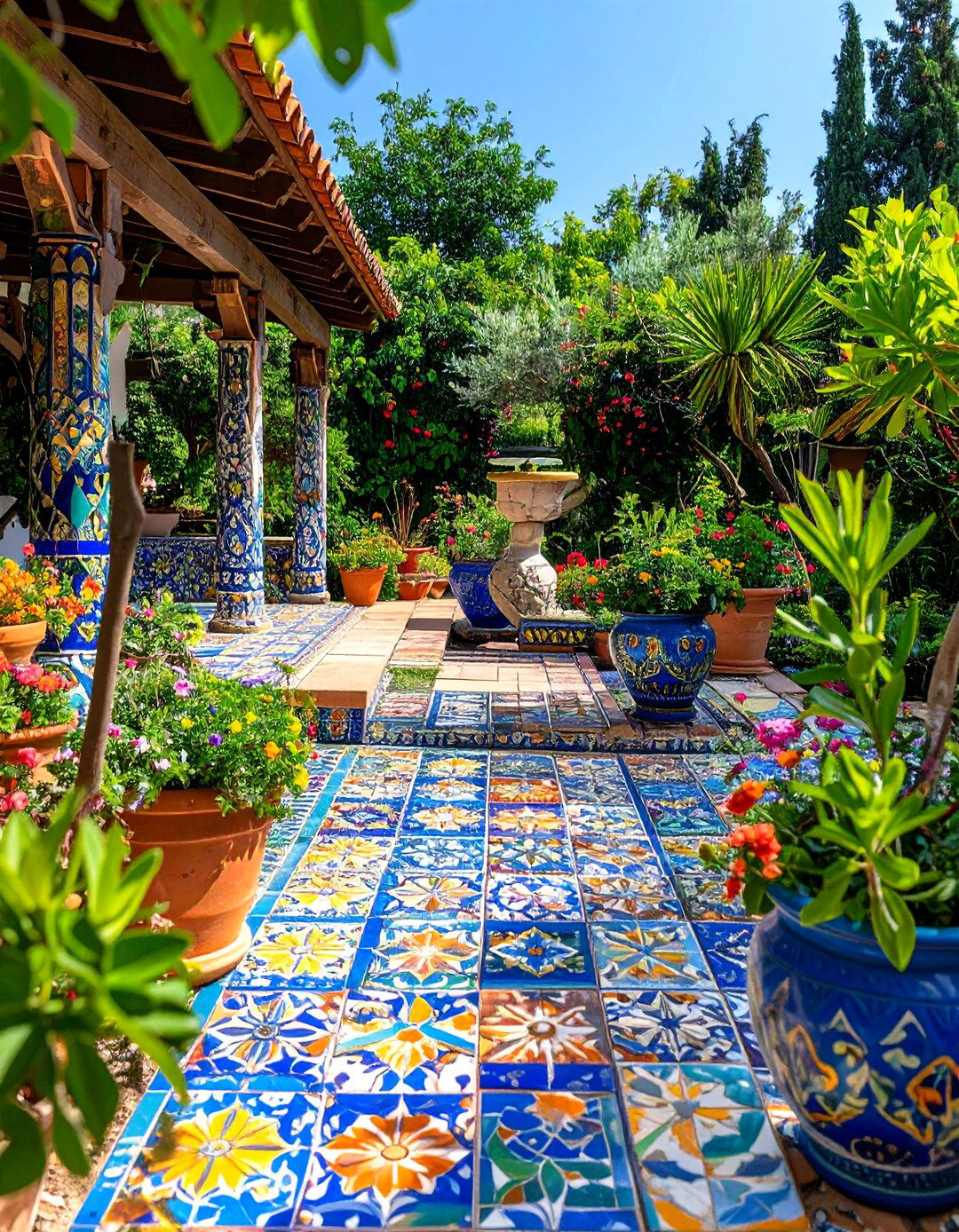
Mediterranean mosaics infuse Italian gardens with cultural richness through intricate patterns reminiscent of authentic Italian artistry. Install colorful mosaic tiles on tabletops, planters, or as decorative accents using warm earthy tones and vibrant blues and purples. These artistic elements work beautifully integrated into fountain designs, pathway borders, or as standalone art installations. Incorporate mosaic tables to enhance rustic charm when combined with terracotta plantings and Mediterranean color schemes. Traditional Italian mosaics often feature natural motifs like olive branches, grape vines, or classical geometric patterns. Use cobalt to turquoise blue shades through tiles and decorative pottery to complement warm terracotta and stone elements. These permanent decorative features add artistic sophistication while reflecting light and creating visual interest throughout garden spaces.
15. Italian Garden Formal Terrace Designs

Italian gardens frequently incorporate terracing and multiple levels to combat hilly terrain while maximizing available space. Terraced designs enable different garden rooms dropping down hillsides, with character gradually transitioning from formal architectural areas near buildings to informal naturalistic spaces at perimeters. Each terrace level can feature distinct themes while maintaining overall design coherence through repeated materials and plantings. Stone staircases connect different levels while water features create visual connections between terraces. Wide terraces accommodate outdoor dining and entertaining areas while narrow levels work well for specialty plantings. These elevated positions offer excellent vantage points for enjoying surrounding views as well as observing garden compositions from above. Retaining walls provide opportunities for cascading plantings and integrated seating areas.
16. Italian Garden Secret Garden Spaces

Italian gardens traditionally include intimate giardino segreto or secret garden areas that provide private retreats within larger landscape compositions. Edith Wharton's famous walled secret garden was funded by proceeds from "The House of Mirth" and represents classic Italian garden room design. These enclosed spaces often feature specialized plantings, intimate seating areas, and decorative elements scaled for personal enjoyment. Consider creating vine-draped pergola hideaways or tucked-away bench installations that provide intimate getaway spaces. Traditional grottos served as artificial cave-filled retreat spaces where visitors could enjoy refreshments in cool, furnished environments. High walls or evergreen hedging create necessary privacy while internal pathways reveal hidden surprises. These contemplative spaces offer respite from larger garden areas while maintaining connection to overall design themes.
17. Italian Garden Reflecting Pool Features
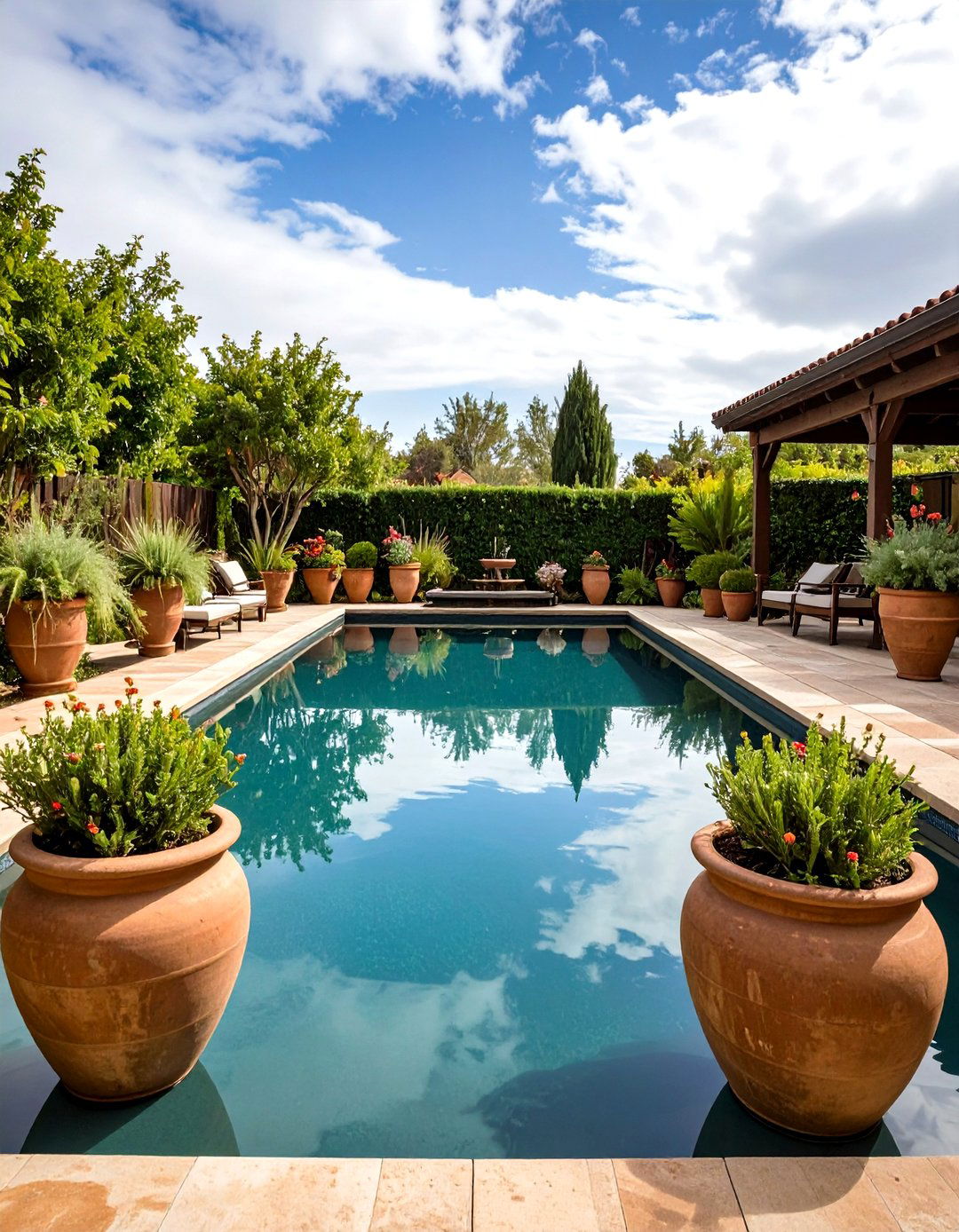
Reflecting pools represent ultimate expressions of serenity in Italian garden design, bringing celestial elements into terrestrial garden spaces. Line reflecting pools with tall, eye-catching pots to maintain beauty even on cloudy days when reflections are less dramatic. These still water features create mirror-like surfaces that double garden beauty while providing habitat for aquatic plants and wildlife. Traditional Italian water gardens feature symmetrical blue-tiled pools with sparkling fountains creating lively water movement through hundreds of jets. Shallow pools work effectively in smaller spaces while deeper installations can support water lilies or koi fish. Natural stone construction ensures longevity while classical proportions maintain authentic Italian character. Position reflecting pools as central features where they can capture sky reflections and surrounding garden elements.
18. Italian Garden Aromatic Herb Spiral Designs
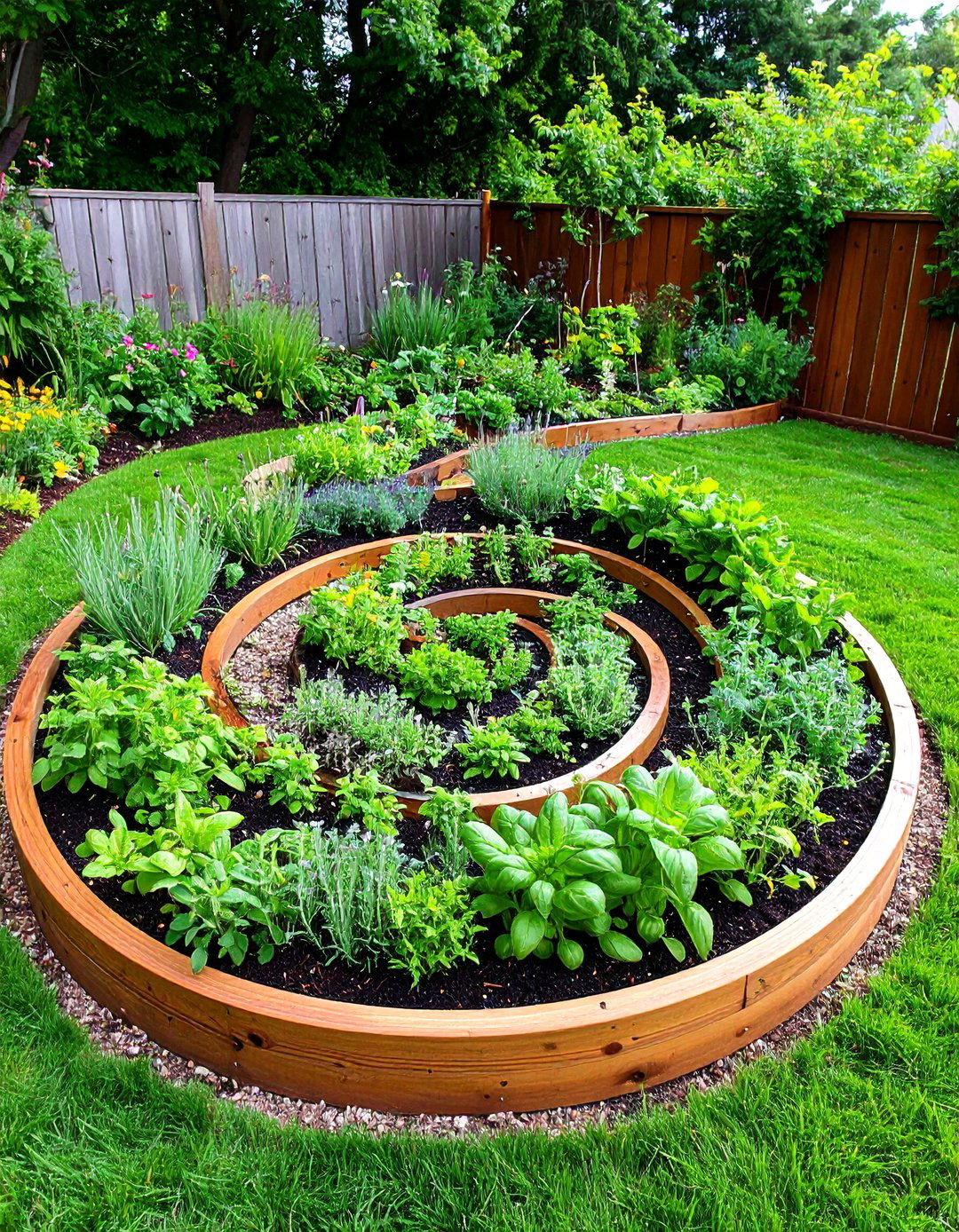
Create dedicated herb spirals that maximize available sunlight while organizing aromatic Mediterranean plants in accessible, attractive formations. Traditional Italian herbs including dried rosemary, oregano, and sage from Southern Italy provide intensive aromatic fragrances perfect for culinary use. Spiral designs enable different microclimates within single installations, with sun-loving herbs at elevated positions and moisture-preferring varieties in lower areas. Position herb gardens near outdoor dining spaces for convenient culinary access while enjoying natural fragrances during garden activities. Use aromatic herbs like mint leaves and lavender sprigs as wonderful garnishes for drinks and outdoor entertaining. These productive garden features combine practical harvesting capabilities with ornamental beauty, creating four-season interest through different textures, colors, and seasonal changes.
19. Italian Garden Wrought Iron Architectural Details
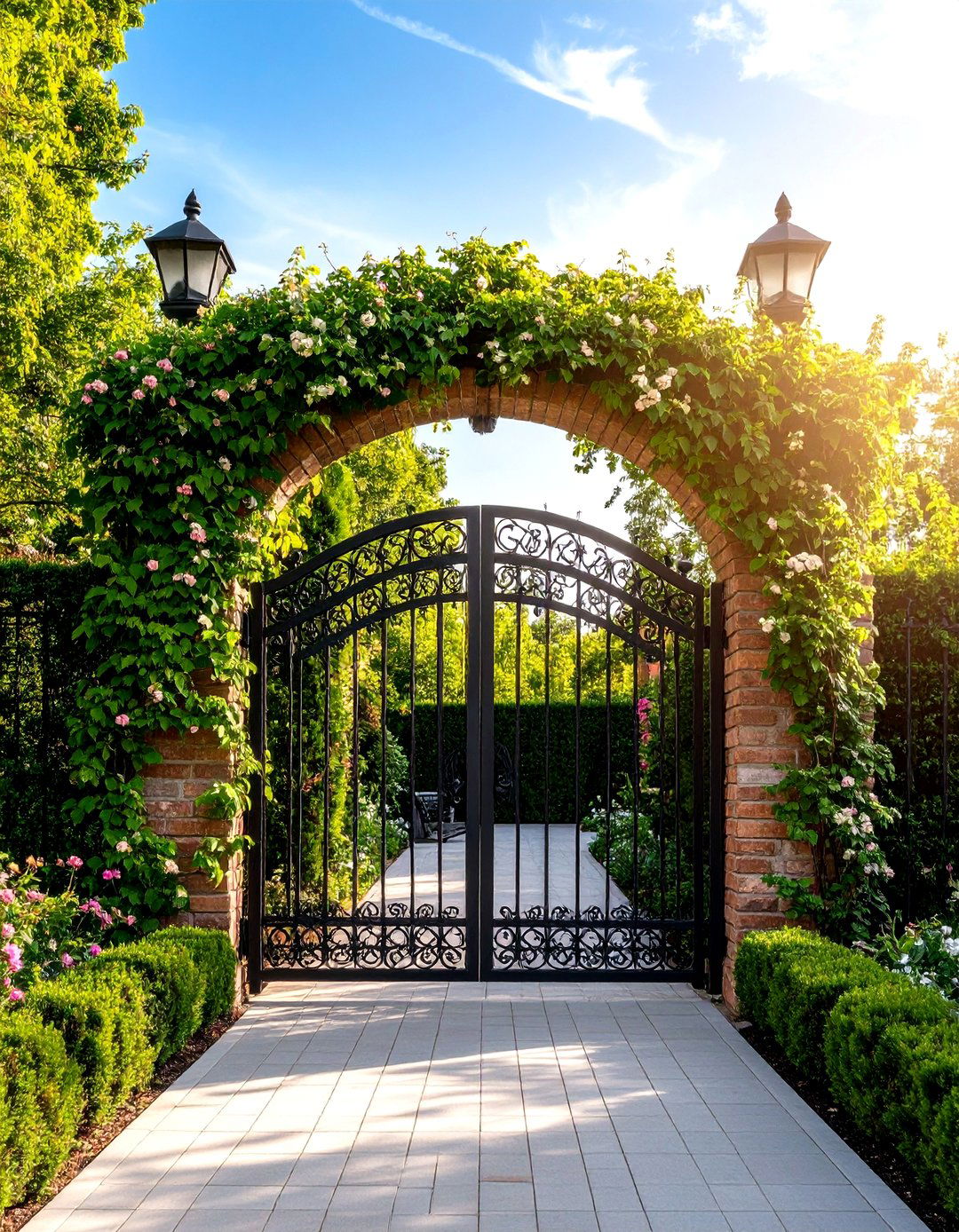
Heavy ironwork gates and decorative elements add grandeur to Italian garden entrances while providing security and privacy for estate-style landscapes. Wrought-iron gates, trellises, and wall art featuring intricate designs complement rustic garden charm while supporting climbing plants. These metal elements develop beautiful patina over time while requiring minimal maintenance in outdoor environments. Outdoor lighting fixtures made from copper and brass offer both vintage and modern design options perfect for garden path illumination. Train climbing roses on metal posts and structures to create romantic combinations of living and architectural elements. Wall-mounted planters maximize growing space while adding decorative vertical interest to garden walls and structures. These permanent installations provide framework for seasonal plantings while maintaining classical Italian garden character throughout changing seasons.
20. Italian Garden Ornamental Grass Accents
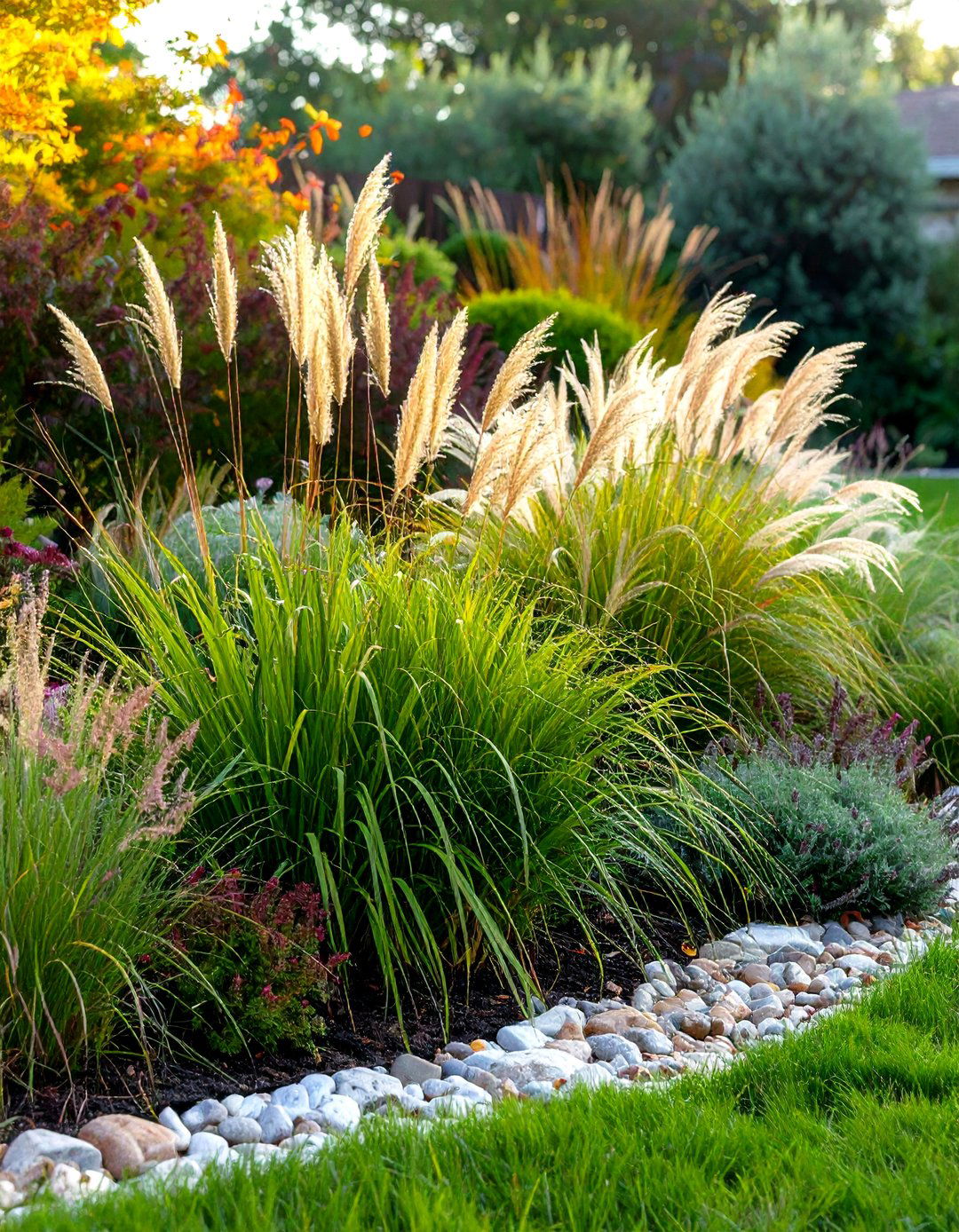
Modernize traditional Tuscan garden themes with ornamental grasses that add textural variety and bold, flowing elements to structured landscape designs. Recommended varieties include muhly grasses and deer grass that provide movement and seasonal interest while requiring minimal maintenance. These contemporary plantings soften formal hardscape elements while creating naturalistic transitions between structured and informal garden areas. Ornamental grasses work beautifully when planted in drifts around Mediterranean shrubs or as accent features near water installations. Their architectural seed heads provide winter interest while spring growth offers fresh green color. Combine ornamental grasses with traditional Italian elements like olive trees and lavender plantings for updated Mediterranean garden compositions. These resilient plants tolerate drought conditions while adding contemporary sophistication to classical Italian garden frameworks.
Conclusion:
Italian garden design offers timeless principles that transform any outdoor space into sophisticated Mediterranean retreats celebrating the perfect balance between human artistry and natural beauty. These landscapes combine elegance, rigor, and attention to detail where harmony of forms conveys states of calm and well-being. From dramatic cypress allées to intimate herb gardens, each element contributes to cohesive compositions that engage all senses through fragrance, texture, sound, and visual beauty. Whether implementing single features like terracotta container gardens or comprehensive landscape renovations incorporating water features and formal terracing, Italian garden principles adapt beautifully to various climates and property sizes while maintaining authentic Mediterranean character.


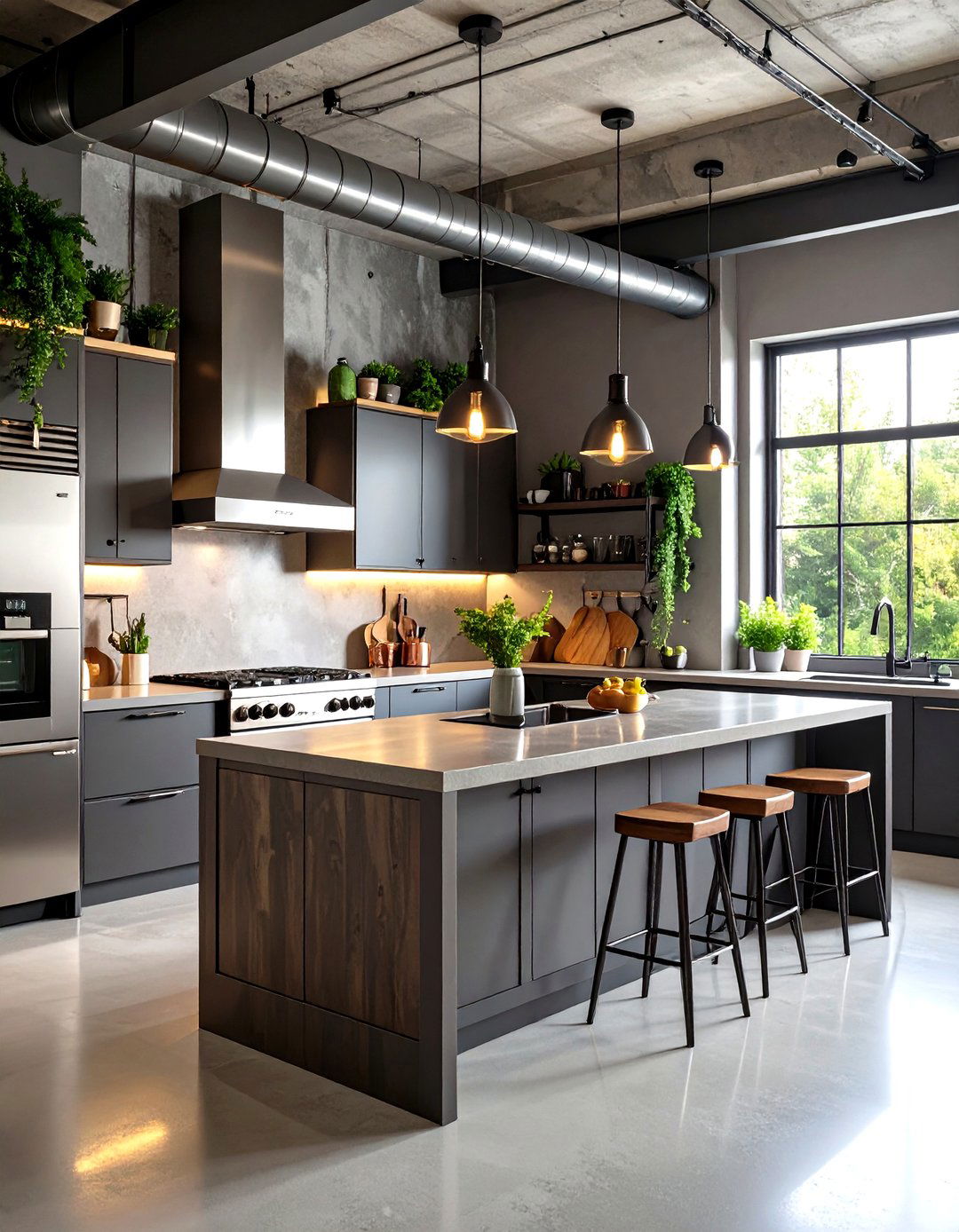
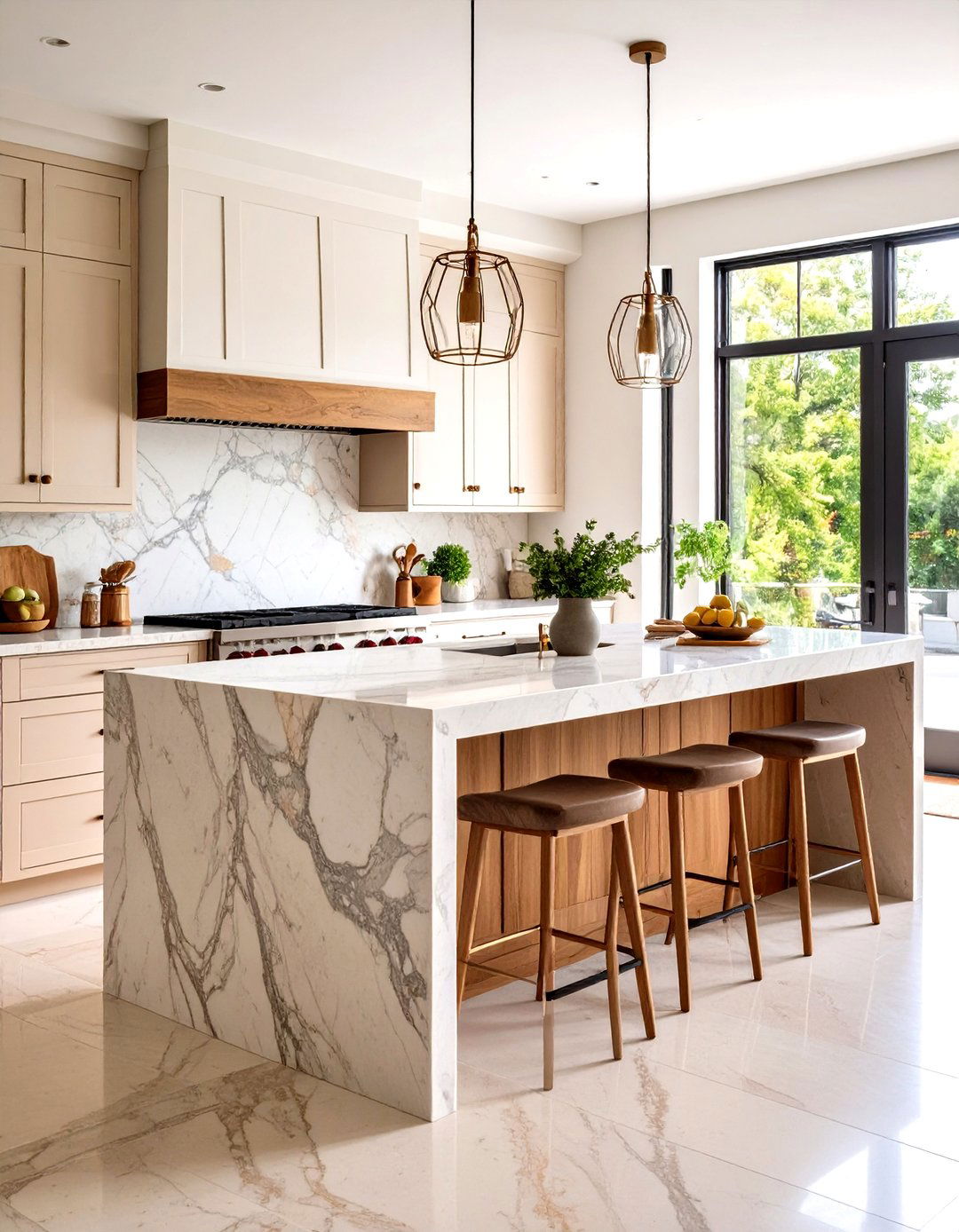
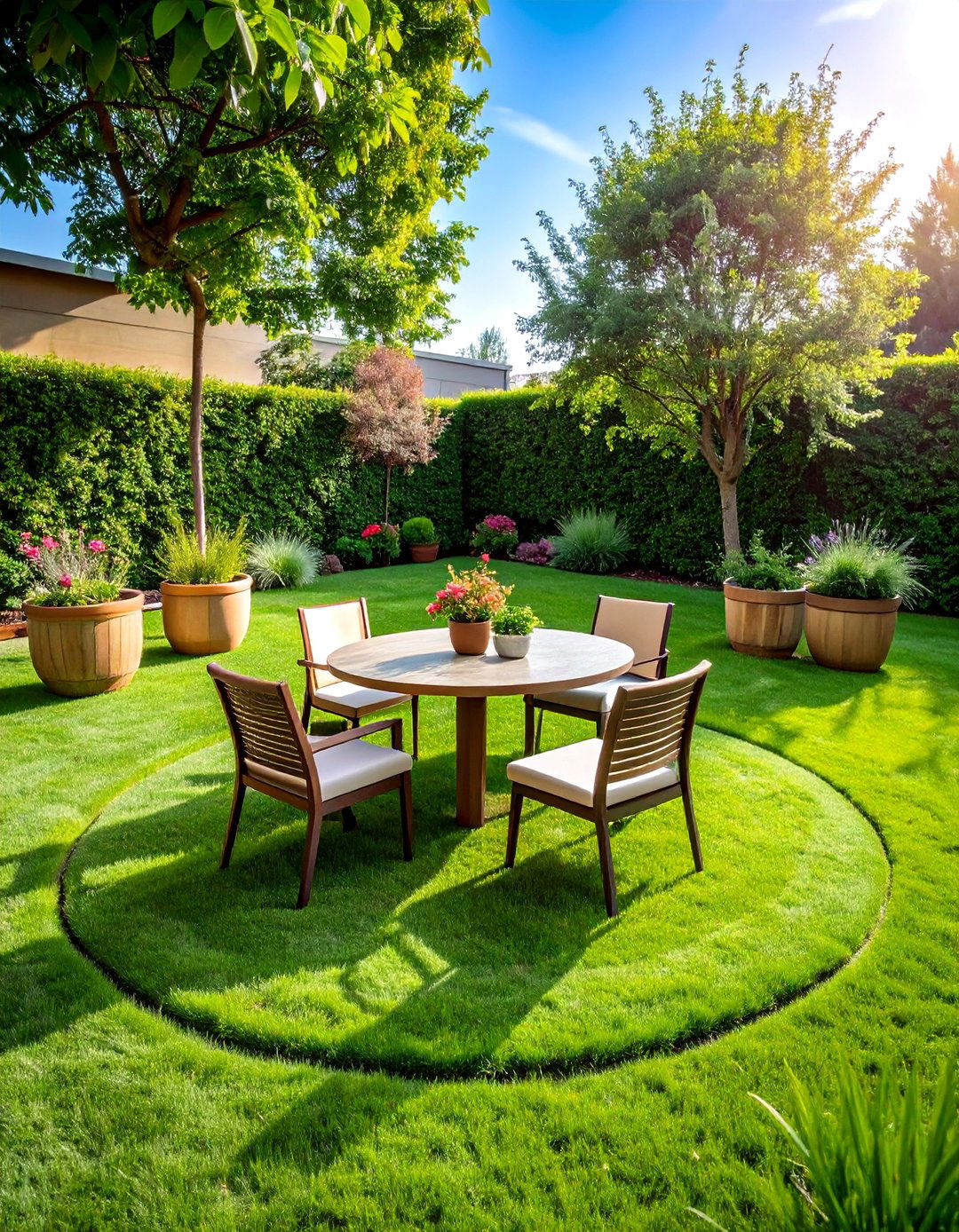
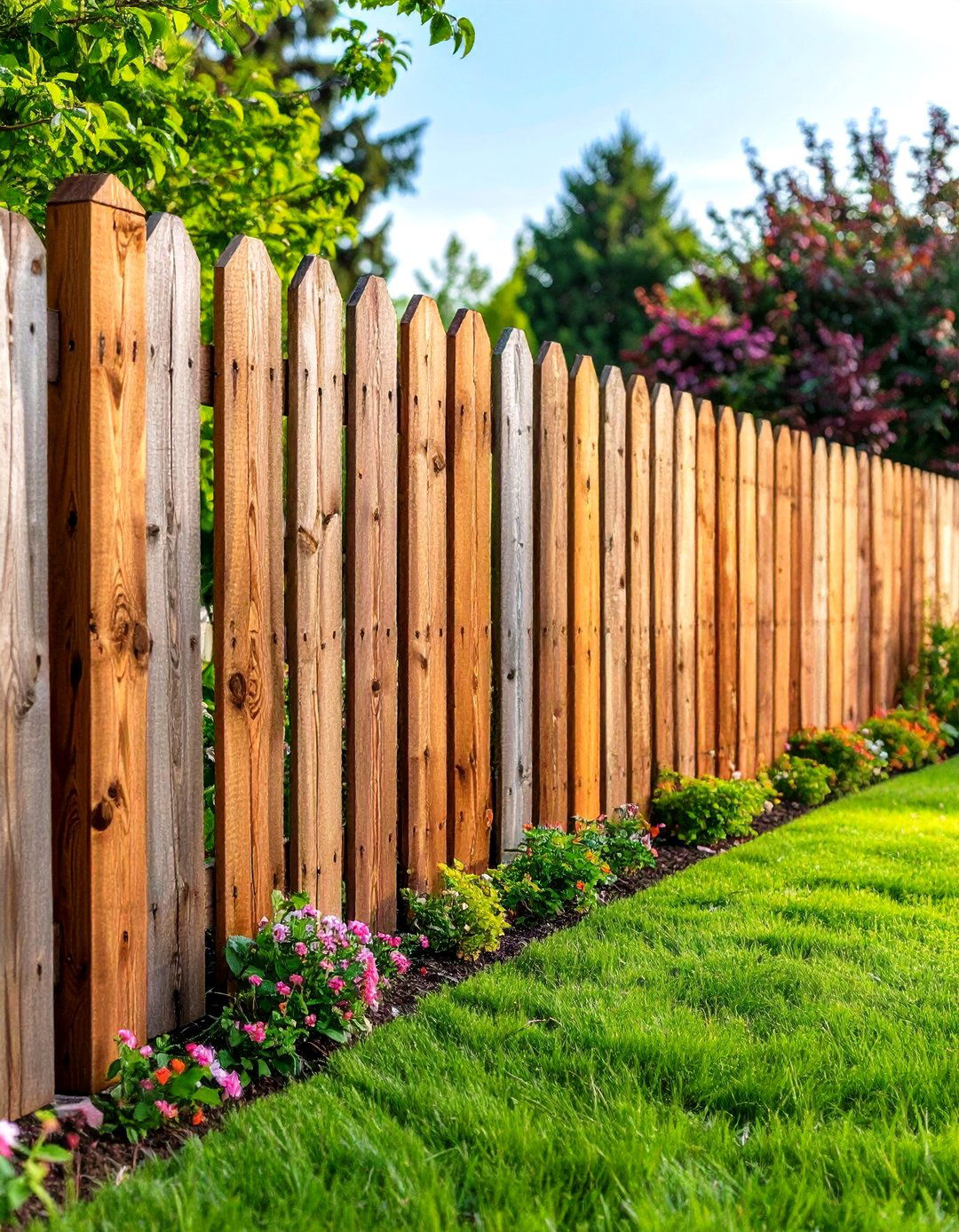
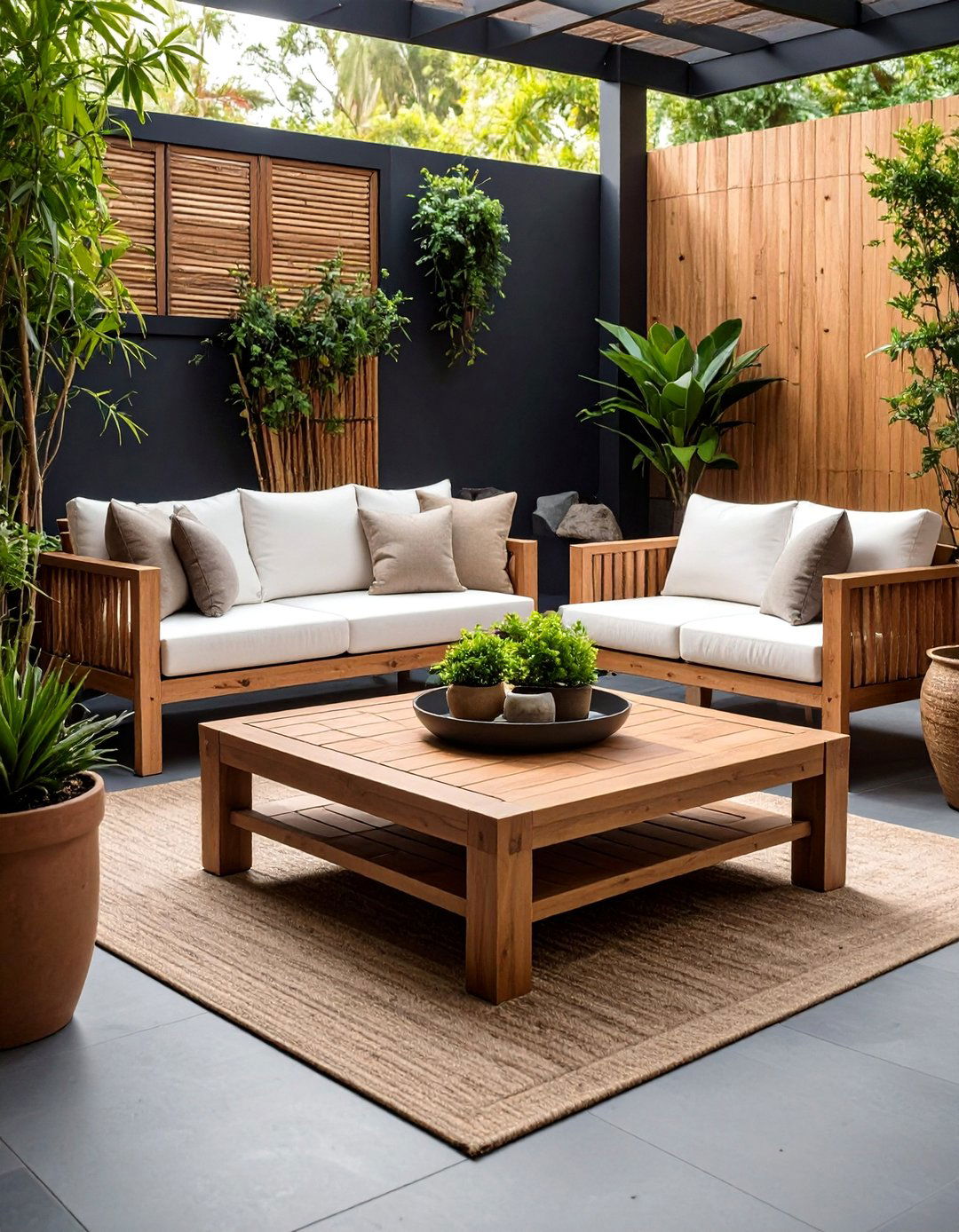
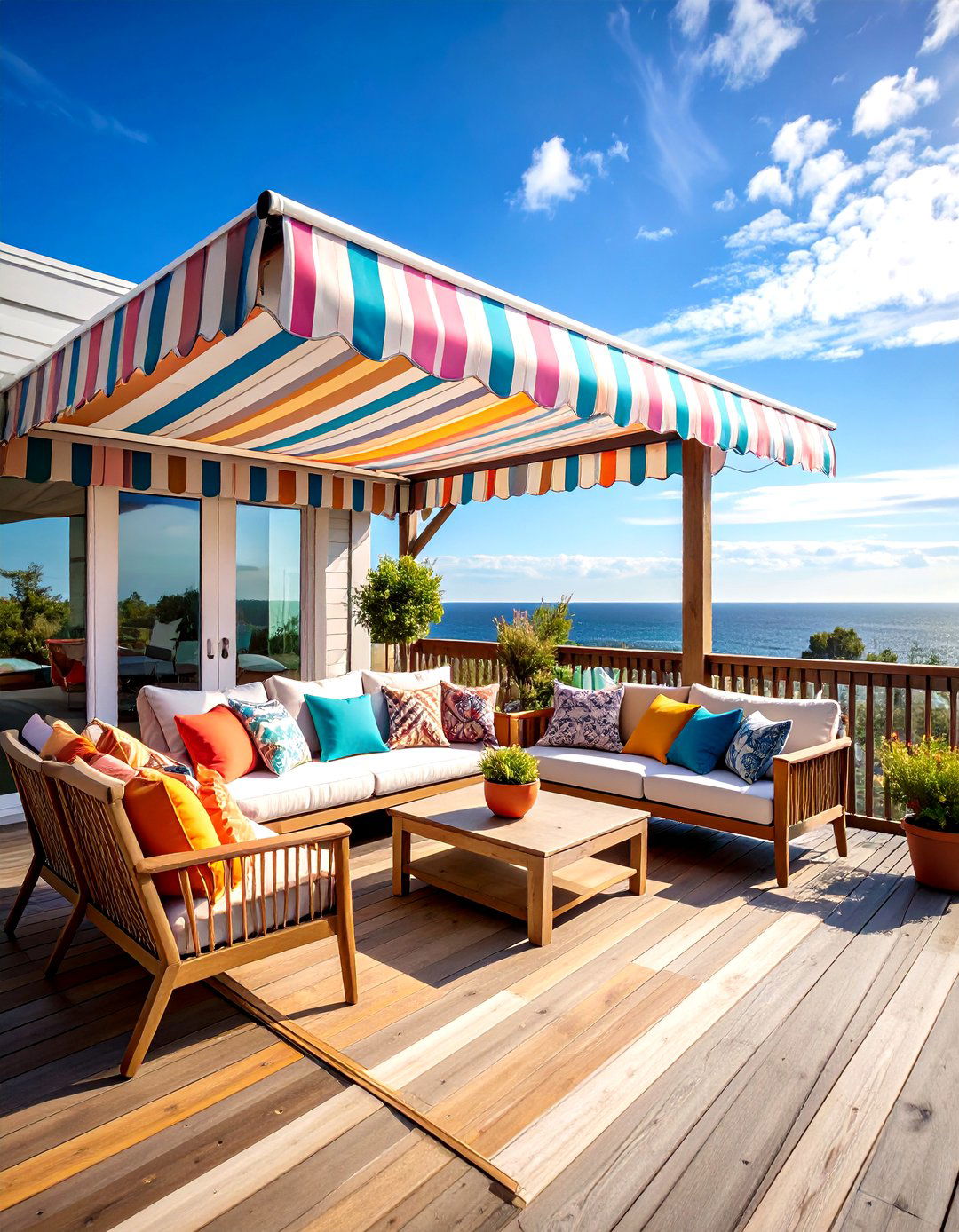
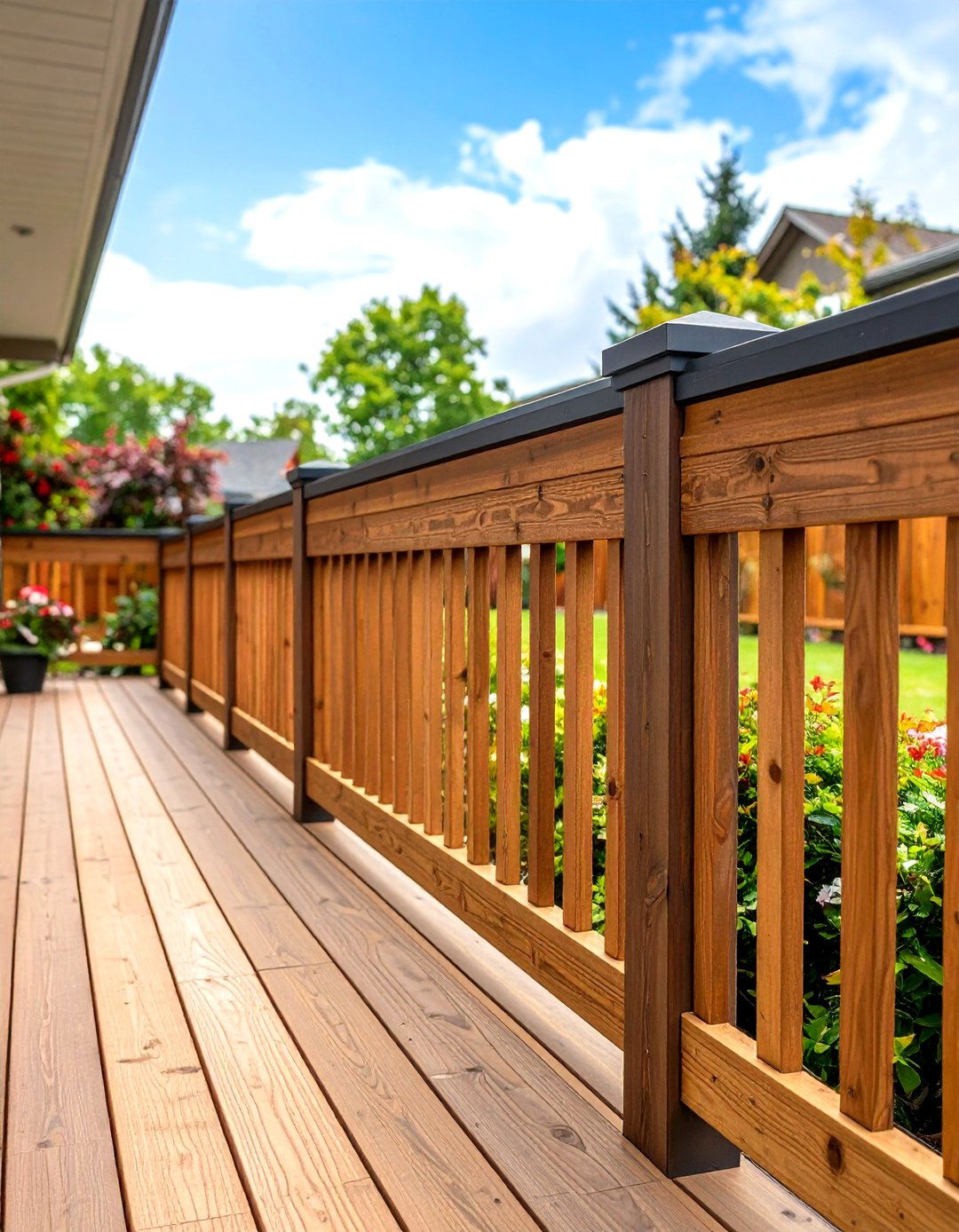

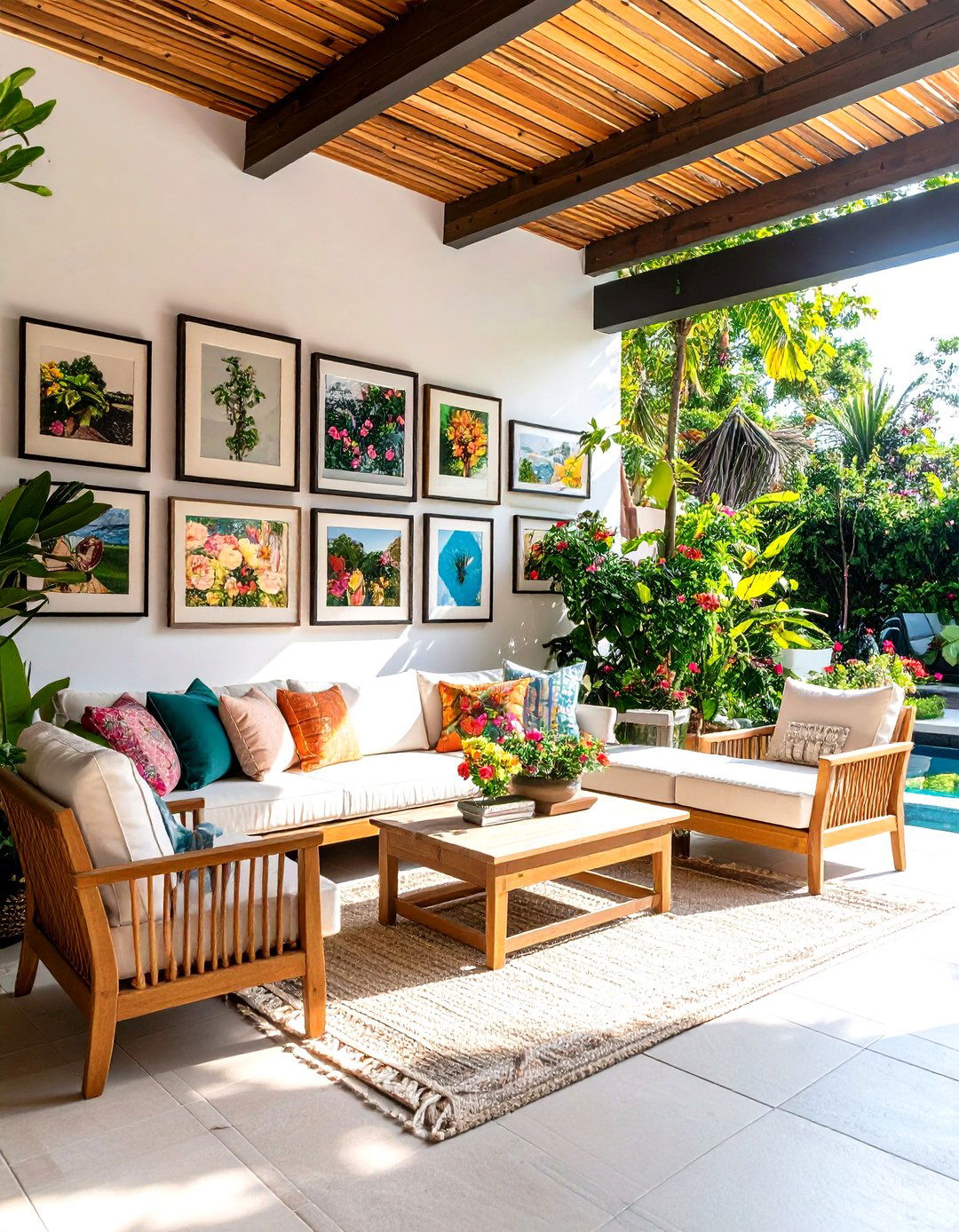
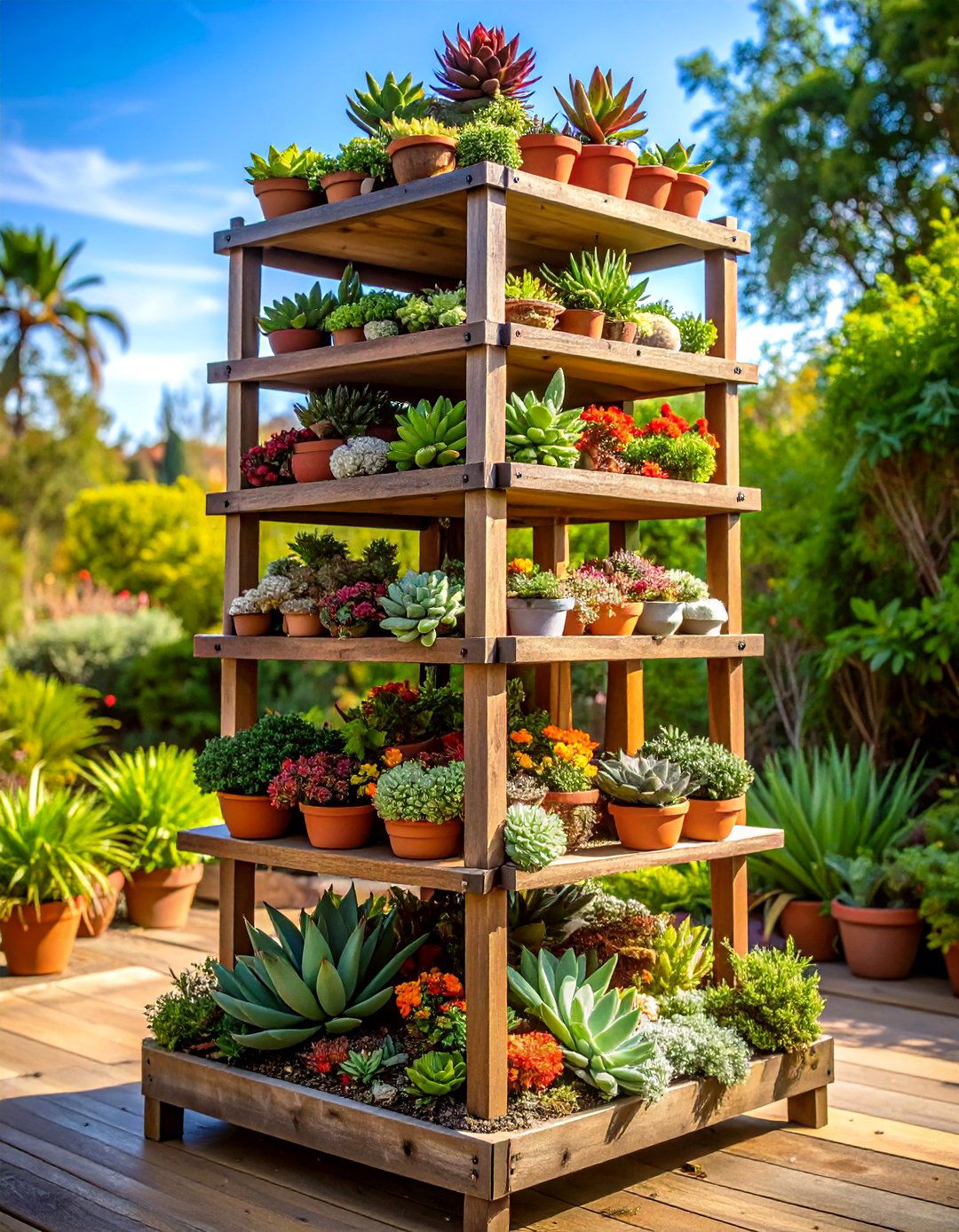

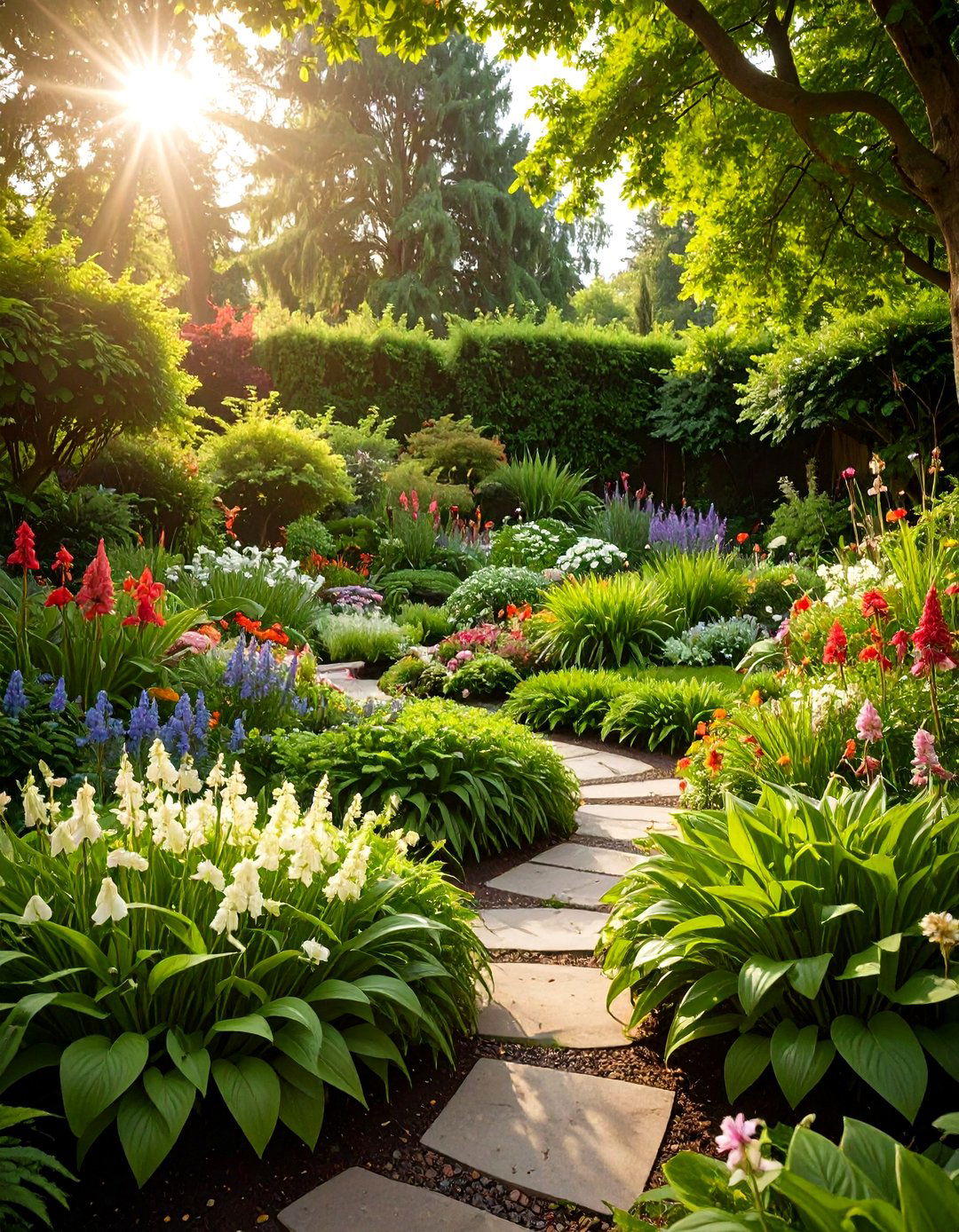
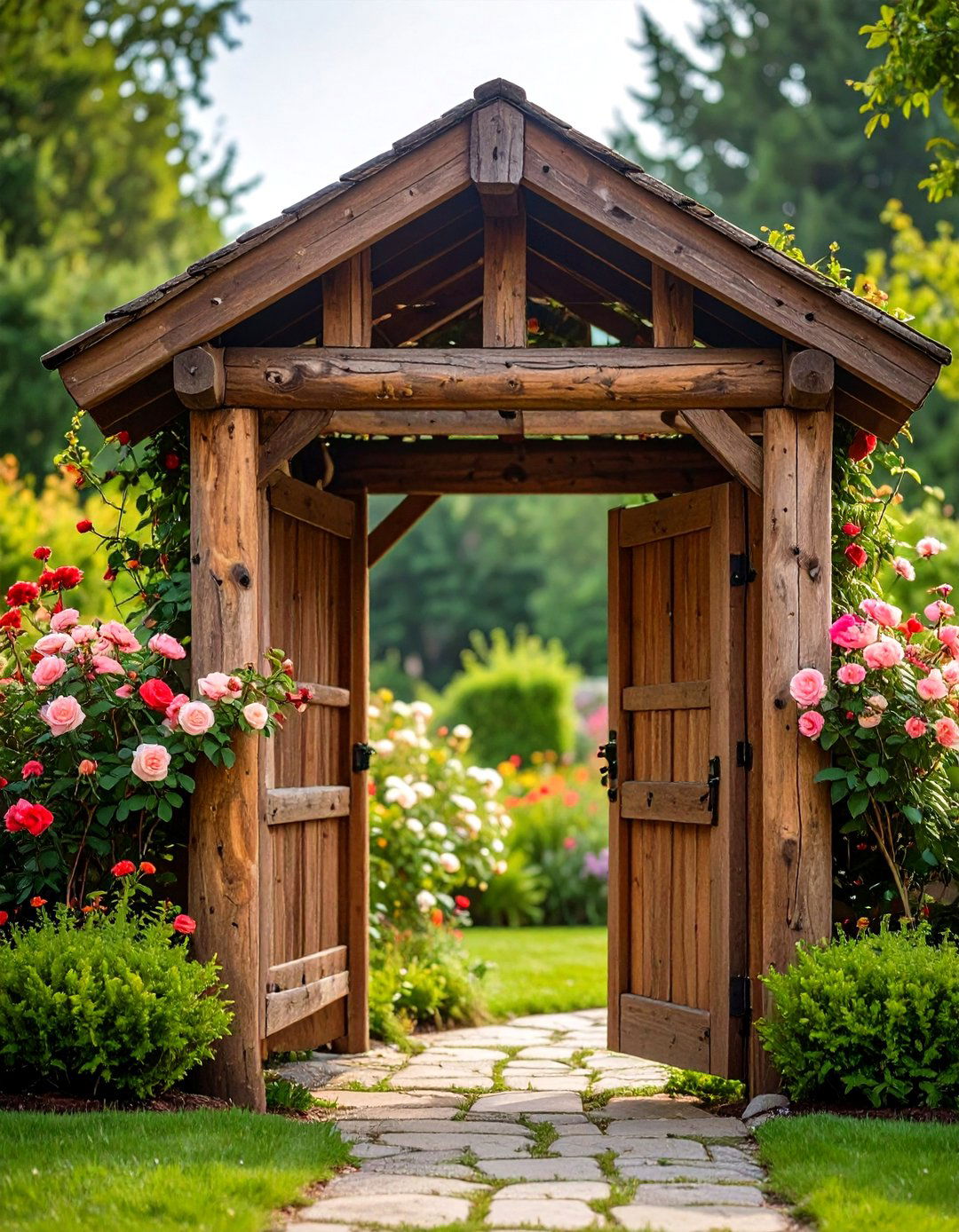
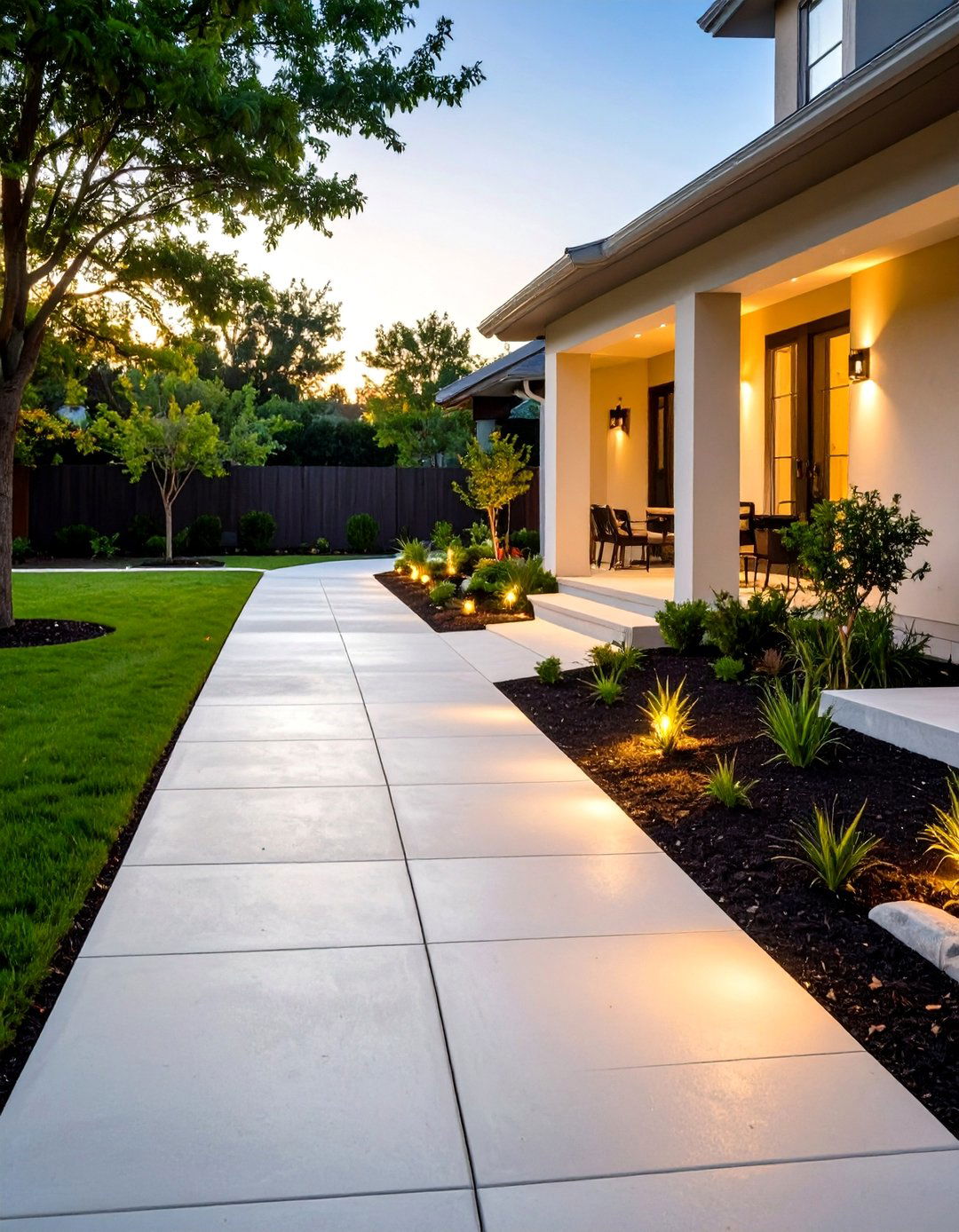

Leave a Reply